Desert landscapes thrive on thoughtful balance—between sizzling sun and cool shade, stone and bloom, bold form and water-wise function. By leaning into native plants, permeable hardscape, and smart irrigation, you can shape outdoor rooms that feel adventurous yet surprisingly easy to maintain. The twenty ideas that follow translate proven xeriscape principles into inviting features—from sculptural cactus beds to moonlit courtyards—so you can mix, match, and adapt them to any dry-climate lot. NMSU Publications UA Cooperative Extension
1. Desert Landscape Native Cactus Garden
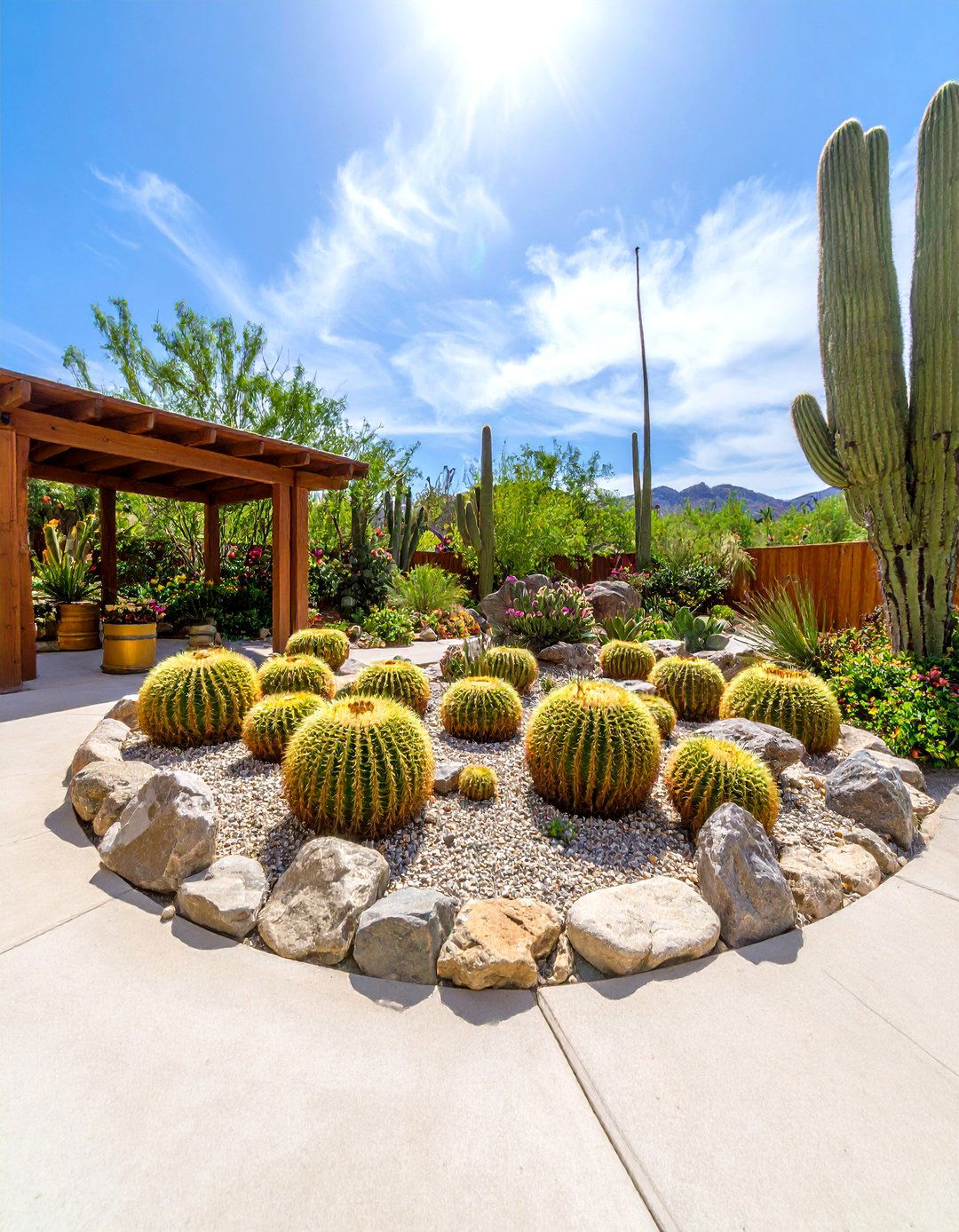
A shimmering palette of barrel, hedgehog, and organ-pipe cacti turns the sunniest corner into a living gallery. Begin with a sandy, fast-draining soil mix and crescent-shape berms that catch seasonal rain. Anchor height at the back with saguaro or cardón, graduate forward through golden barrels, and cap the edge with red-flowering claret cups for spring fireworks. Space plants so mature forms never touch, reducing pest issues and allowing air to circulate. Topdress with decomposed granite to suppress weeds and bounce heat away from delicate roots. Finish with a low-angle spotlight that sets every rib aglow after dusk for dramatic night interest. UA Cooperative Extension
2. Desert Landscape Rock Riverbed Drainage
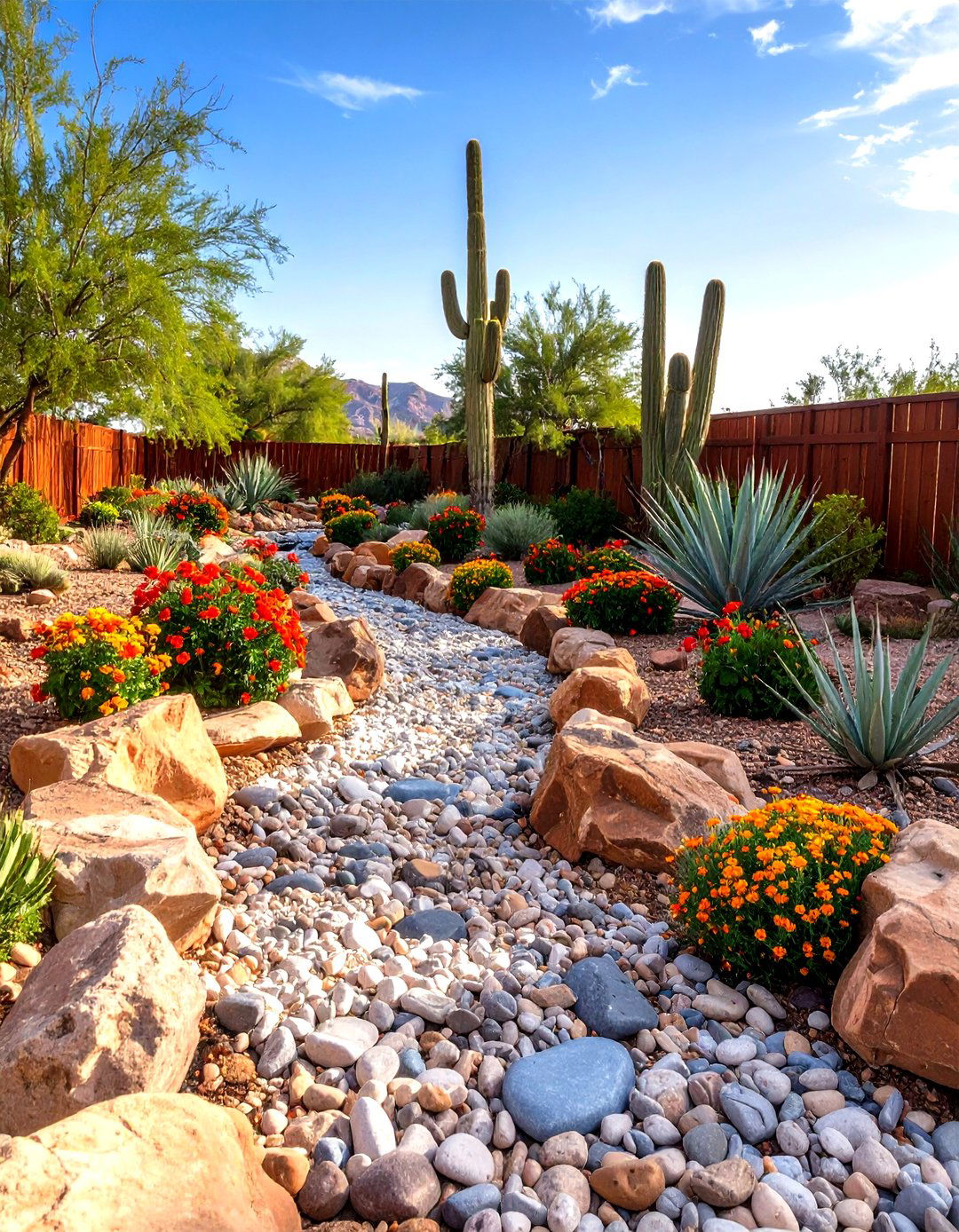
A dry riverbed of river rock weaves both artistry and flood control into the yard. Dig a shallow, meandering swale that starts below roof downspouts and exits at a rain garden, lining it with landscape fabric before setting mixed-size cobbles for a natural look. The rocky channel slows stormwater, recharges soil moisture, and keeps foundations safe. Plant desert marigold, damianita, and trailing dalea along the banks so golden blooms spill between stones after monsoon bursts. Tuck flat boulders at curves as stepping “fords” and accent them with upright ocotillo for vertical punch. Regularly rake debris to keep water moving freely. NMSU Publications Pinterest
3. Minimalist Gravel Courtyard Desert Landscape
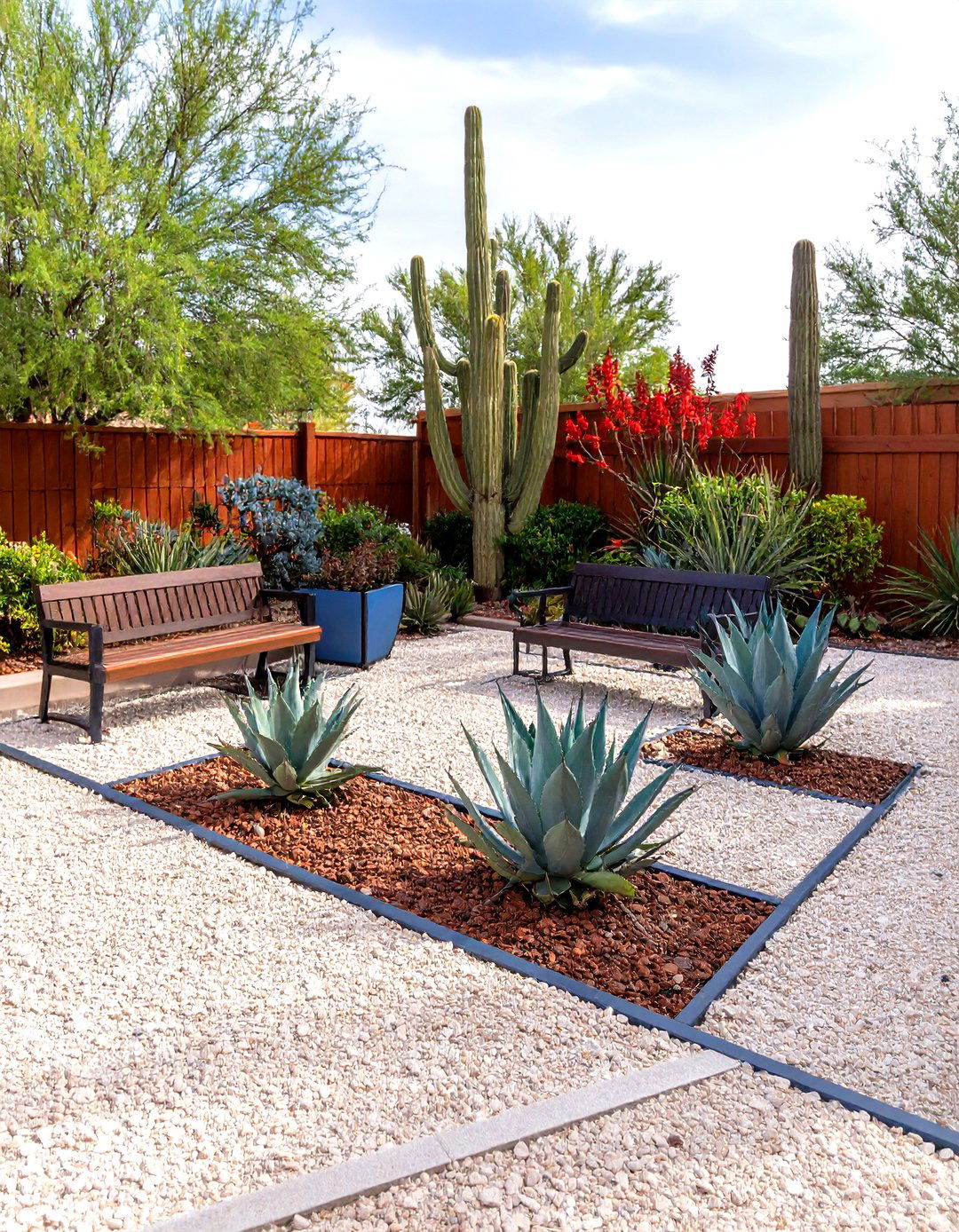
For a chic, low-maintenance retreat, replace thirsty turf with a leveled plane of ⅜-inch granite gravel. Frame the space with rectangular steel edging to hold the aggregate in place and echo the home’s lines. Cluster sculptural containers of blue glow agave and red yucca at one end, leaving negative space elsewhere so texture reads as art. A trio of shade-tolerant mesquite benches invites evening conversation without clutter. Every few weeks, pass a landscape rake over the surface to erase footprints and freshen patterns—Zen-garden style. Sub-surface permeable base layers ensure flash-flood water sinks instead of pooling. Houzz Better Homes & Gardens
4. Desert Landscape Oasis of Drought-Tolerant Trees
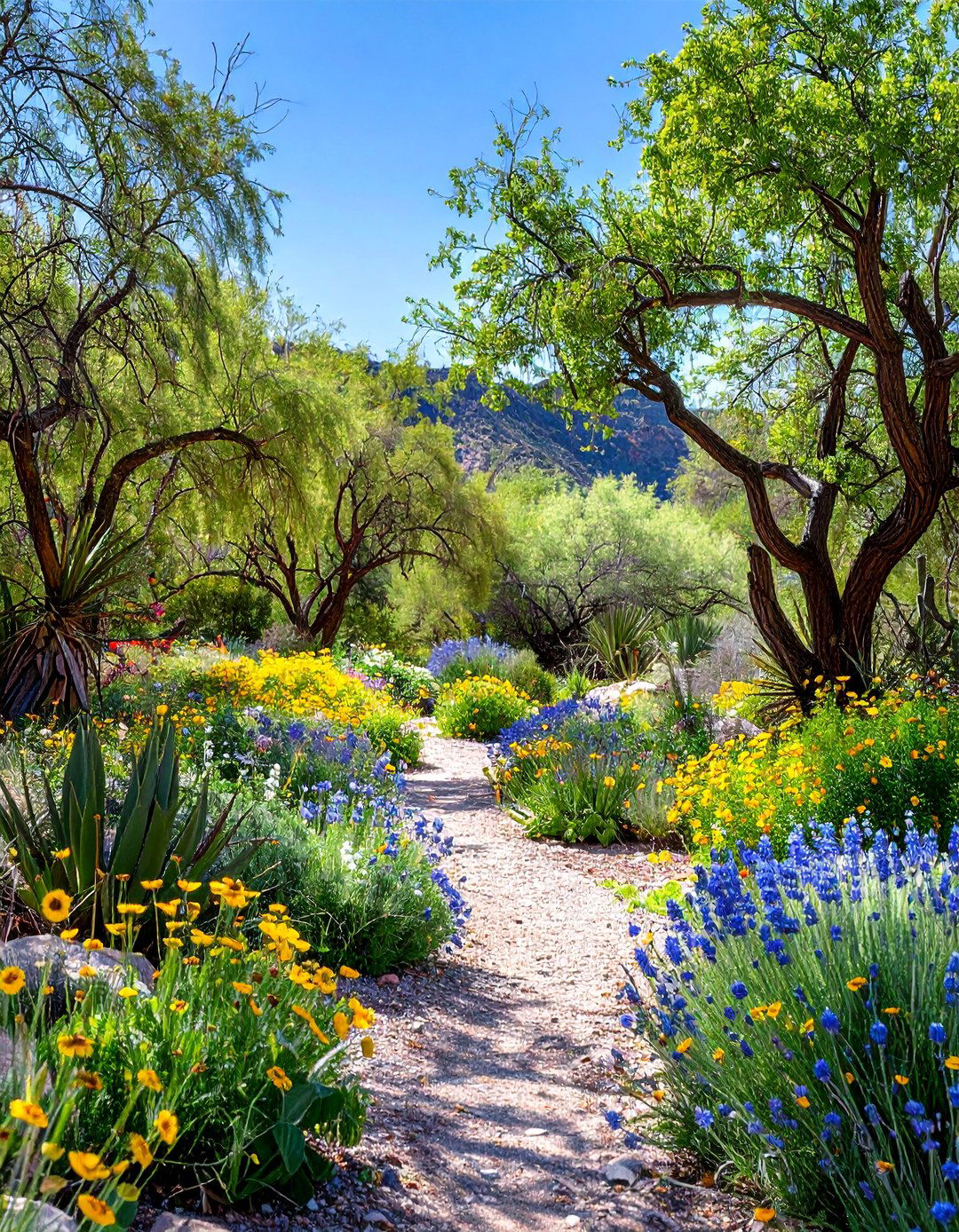
Honey mesquite, blue palo verde, and desert willow lend filtered shade that drops ground temperatures up to 10 °C while surviving on rainfall once established. Stagger canopy sizes for layered shade pockets, then underplant with globe mallow and fairy duster that thrive in dappled light. Keep trunks clear of irrigation emitters to discourage rot; once trees root, downsize water to deep monthly soaks. Fallen leaf litter self-mulches, enriching micro-soil life and reducing evaporation. Prune only in late winter to maintain natural silhouettes that host birds and pollinators all season. Gardenia UA Cooperative Extension
5. Desert Landscape Succulent Living Wall

Surprisingly, vertical gardens work in arid zones when built with shallow, modular pockets and drought-proof succulents. Mount a powder-coated metal frame against a west wall; the air gap behind moderates heat. Mix rosettes—echeveria, graptoveria—with trailing sedum for color drifts that need mere misting until rooted, then a weekly drip pass. Bright paints on the backing panel intensify leaf blues and burgundies without extra flowers. Twice a year, rotate fast-growers out and tuck offsets back in, keeping the mosaic tight. LED strip lighting at the header turns the wall into twilight art while using minimal energy.
6. Desert Landscape Color-Block Flower Beds
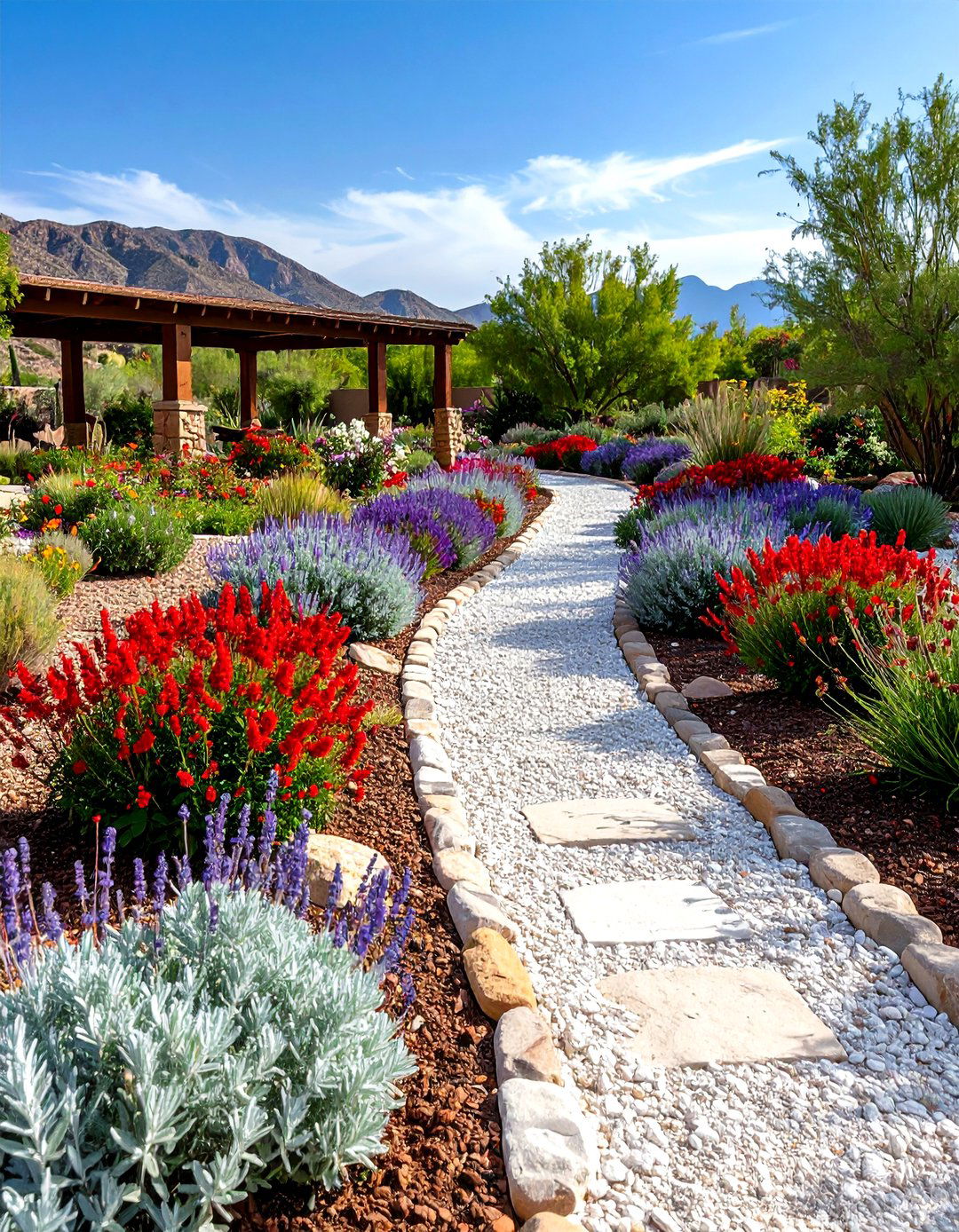
Color-blocking isn’t just for fashion: grouping plants by hue delivers instant drama against neutral stone. Carve rectangular beds and dedicate each to a single tonal family—silver sages in one, fiery red kangaroo paws in the next. The massing magnifies limited bloom windows, so even brief flushes look lush. Edge beds with rust-brown gravel so colors pop, and repeat the arrangement on the opposite side of a path for symmetry. Drip laterals run beneath mulch, feeding each block precisely without overspray. Swap annual poppy or penstemon seedlings into gaps every fall to refresh the palette affordably.
7. Desert Landscape Boulders as Sculptural Focal Points
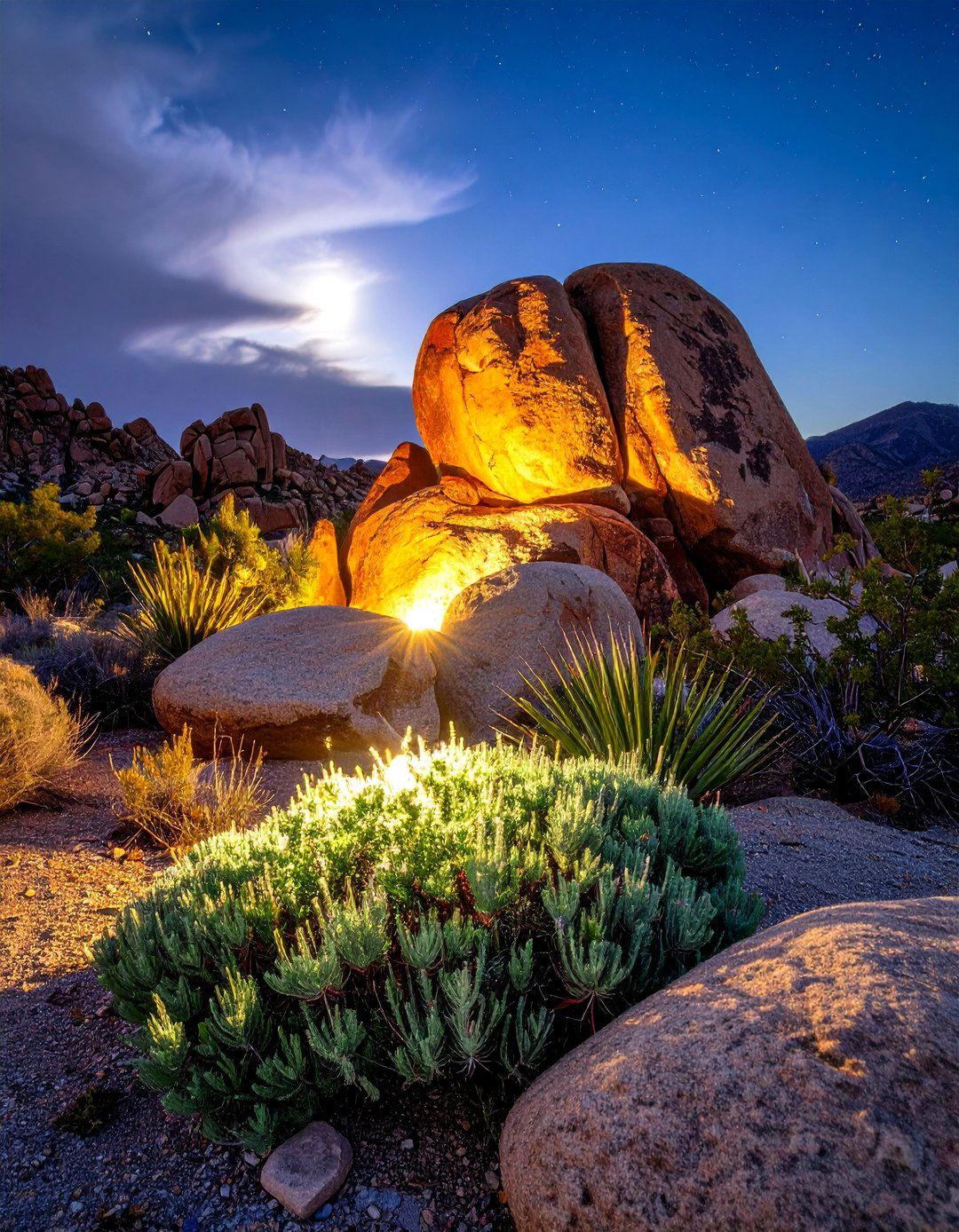
Unlike delicate ornament, a weathered granite boulder never wilts. Crane in two or three stones of contrasting shapes—one tall and columnar, one low and wide—to create instant sense of age. Sink each at least a quarter of its height for authenticity, orienting strata lines horizontally. Plant low mats of gopher plant or trailing rosemary at the bases so evergreen foliage hugs the cool undersides. By day, the boulders cast shifting shadows; by night, a single uplight skims their surface, revealing lichens and mineral glints. Annual maintenance is a simple hose rinse to clear dust. YouTube
8. Shade-Sail Patio Retreat Desert Landscape
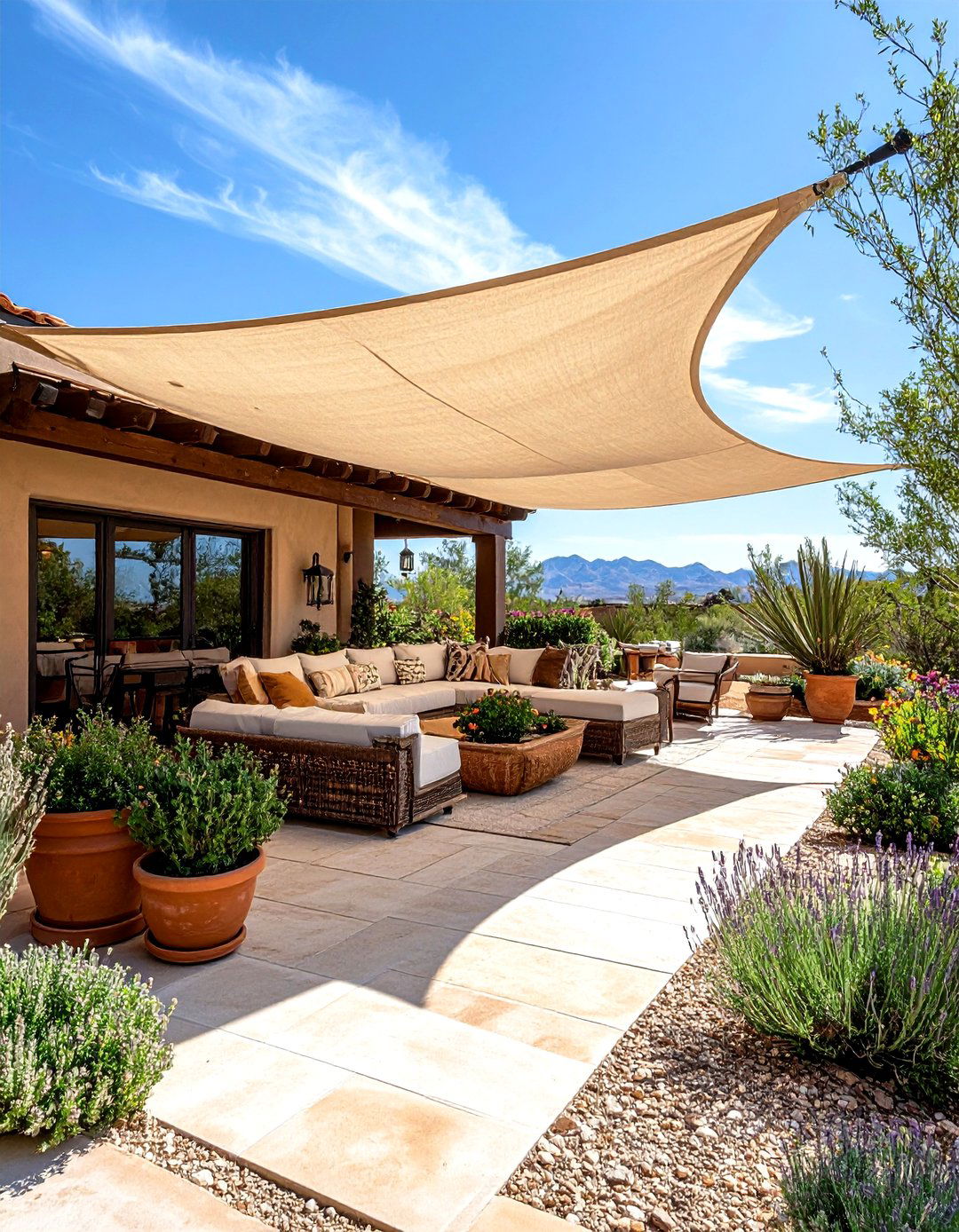
Fabric shade sails stretch style and comfort in one move. Choose UV-rated, breathable cloth in sand or terracotta tones that echo desert cliffs, then mount them on galvanized posts angled to shed storm winds. Overlap two sails at different heights for layered shade reaching 90 % UV block. Beneath, install a saltillo-tile floor that stores solar warmth for cool nights. Cluster drought-tolerant container herbs—oregano, rosemary—where morning sun still filters through. Check tension quarterly and tighten hardware to avoid flap damage. LED rope lights along the perimeter invite late-night gatherings with minimal draw. Pinterest
9. Desert Landscape Fire-Pit Gathering Zone
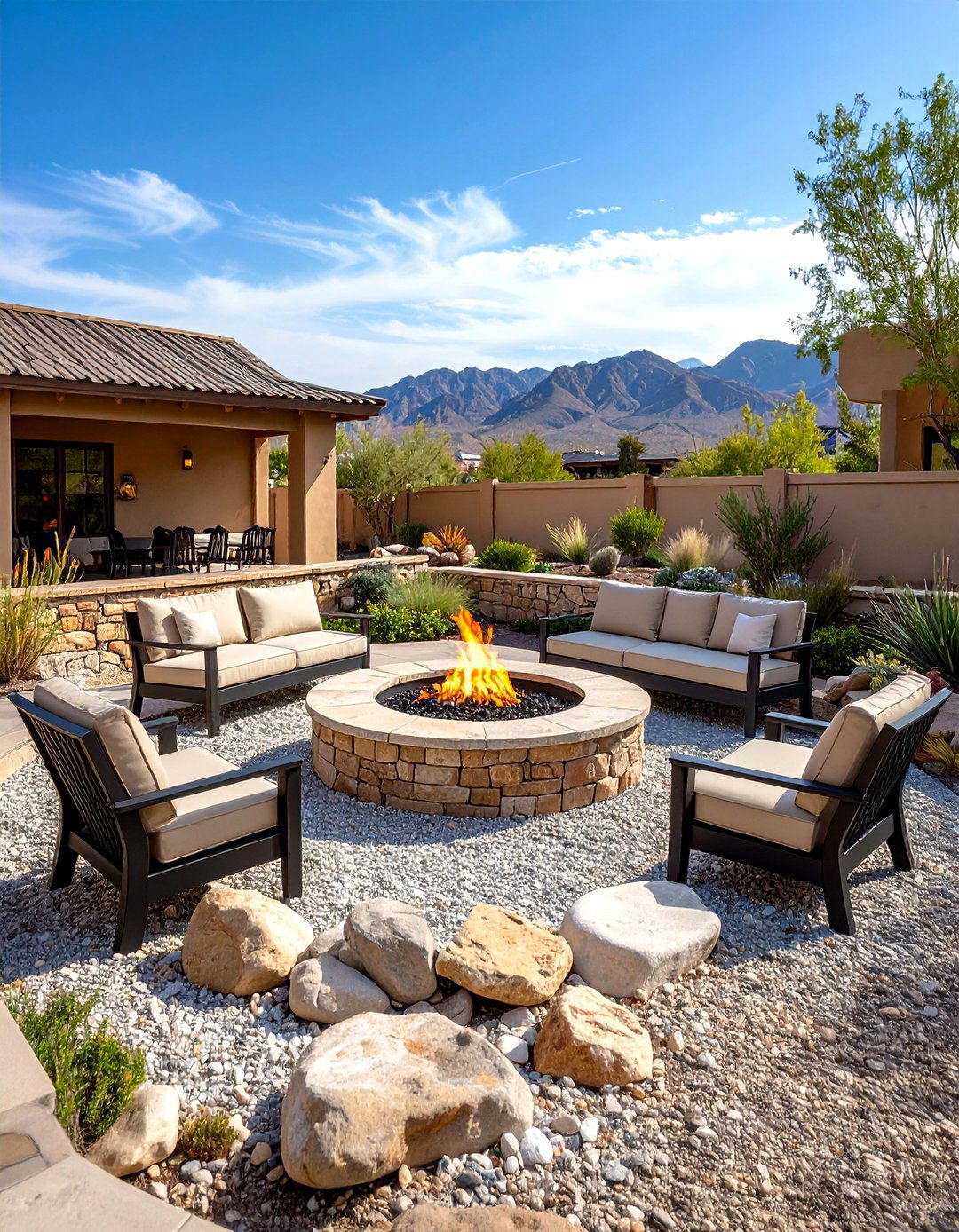
An open-air fire pit brings winter warmth, but spacing is critical in dry climates. Position the structure at least 21 feet from eaves and 10 feet from desert shrubs, conforming to common safety ordinances, and clear overhead branches completely. Seat walls built of stacked stone double as windbreaks and extra seating while reflecting heat inward. Surround the pit with crushed gravel that won’t scorch or spark. Keep a hose bib within reach and store a metal lid nearby for quick snuffing. Between uses, cover the bowl to keep monsoon dust from clogging vents and to deter critters.
10. Water-Wise Drip Irrigation Grid Desert Landscape
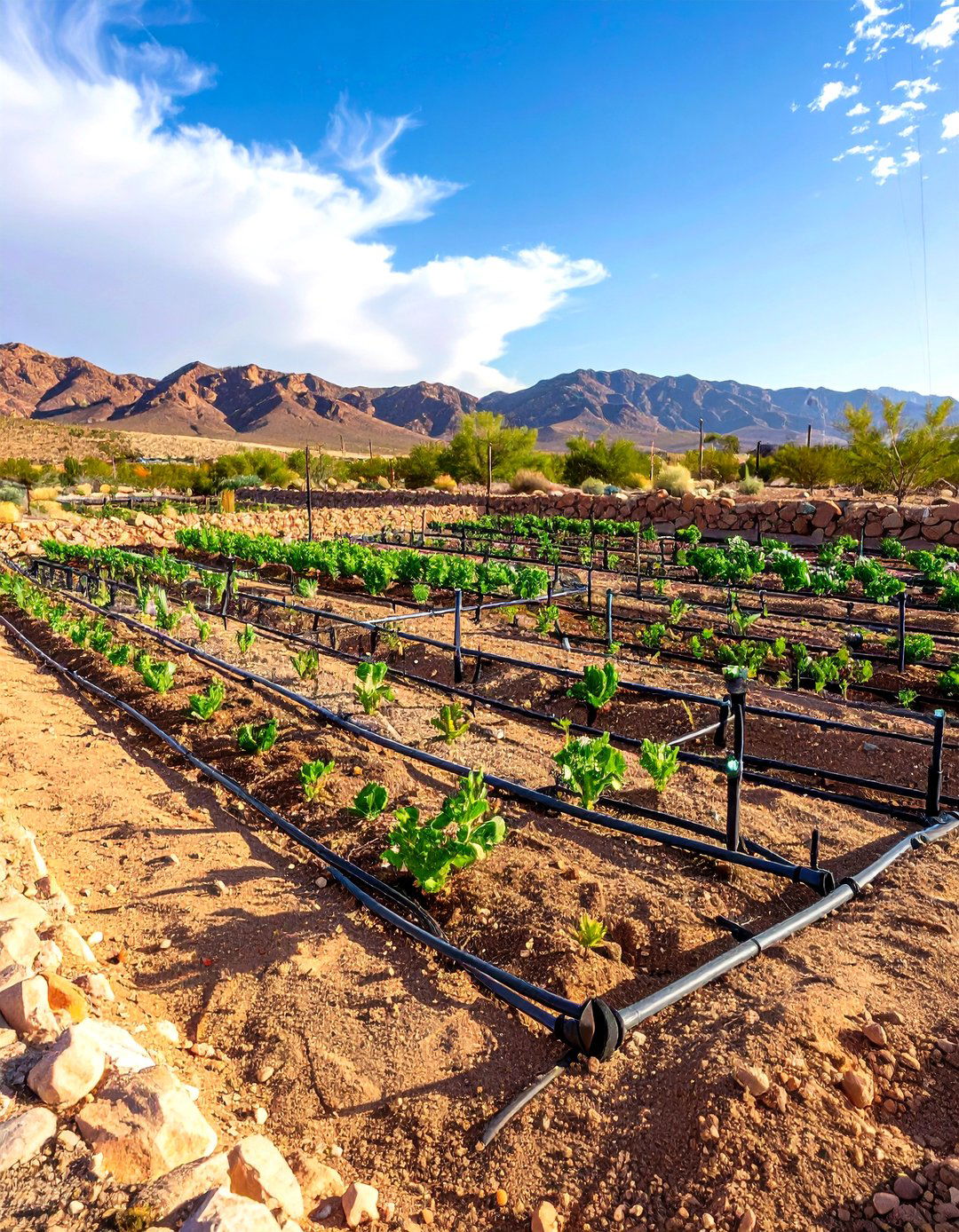
A grid of ½-inch poly tubing with 0.5 gph emitters delivers moisture exactly where roots need it, cutting evaporation by up to 60 %. Zone plants by water demand—high, moderate, minimal—and program separate schedules so thirsty citrus never over-soaks agave. Include a Y-filter and pressure regulator at the valve per extension guidelines to prevent clogging. Flush lines each season and inspect emitters for mineral build-up. Bury tubing two inches below mulch to protect from sun bite yet allow troubleshooting. A smart controller tied to weather data can automatically skip cycles after rare rain events. Arizona Department of Water Resources UA Cooperative Extension
11. Desert Landscape Moonlight Garden with Pale Foliage
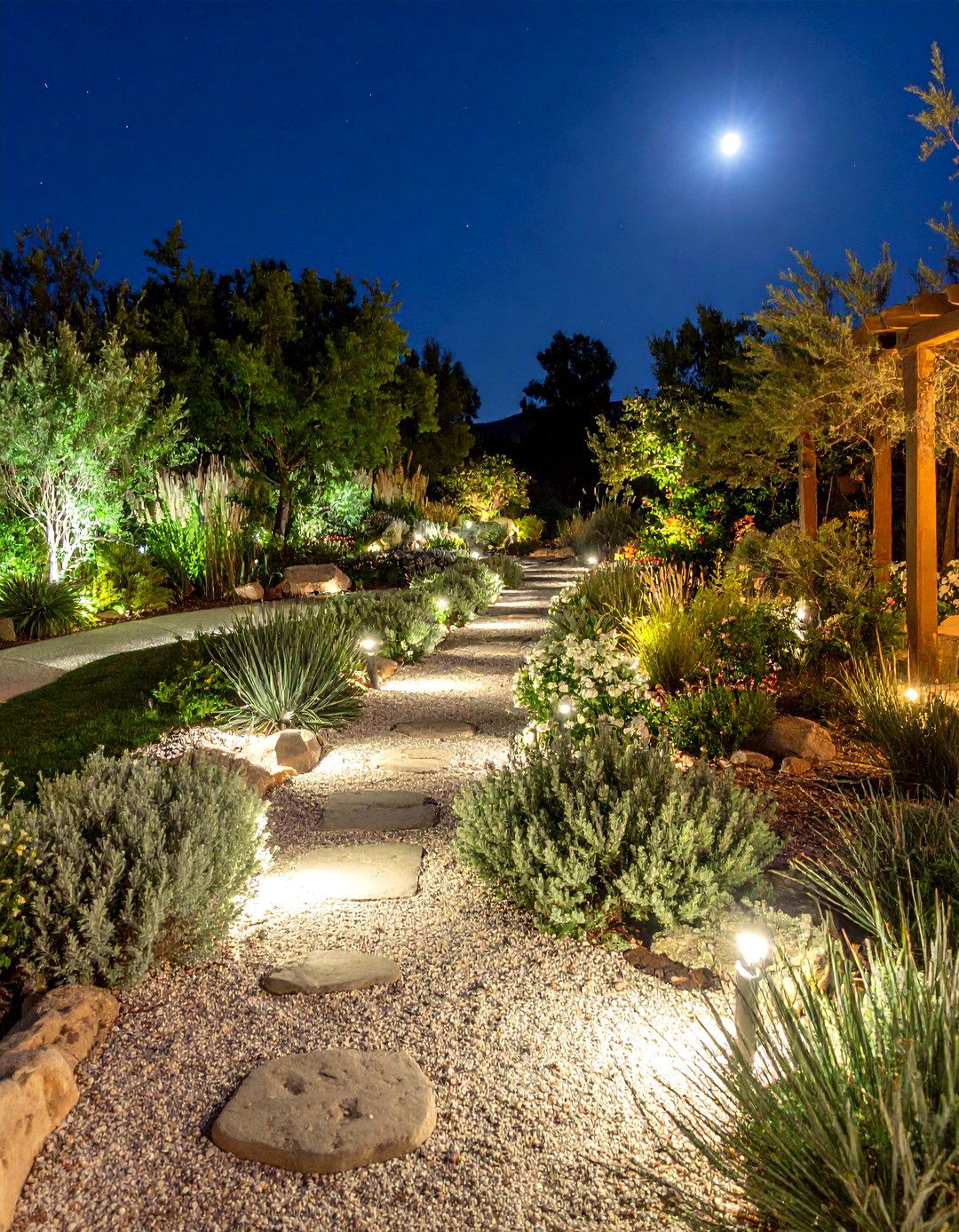
Silver, white, and blue-gray leaves glow after sunset, turning a modest bed into a nighttime focal point. Mass plantings of silver wormwood, Tuscan Blue rosemary, and white evening primrose shimmer under soft downlights mounted in nearby trees. Avoid strong colors that disappear in low light. Gravel mulch reflects glints upward, amplifying luminosity. The restrained palette calms the eye, making small yards feel larger when viewed from indoors. Schedule irrigation at dawn to leave foliage dry before nightfall, reducing fungal risk common with nocturnal lighting. Solar step lights guide safe footing without wiring. Homebuilding
12. Desert Landscape Pollinator Patch for Arid Climates

Pollinator life surges when you devote even a 4×8-foot bed to nectar plants like desert milkweed, penstemon, and lantana. Group species so at least three bloom every season, ensuring continuous food. Avoid systemic insecticides; instead, hand-remove pests to keep nectar clean. A shallow “puddling” dish of water and sand offers butterflies essential minerals. Leave seed heads on until late winter so finches and sparrows can feast, then shear plants back to encourage fresh growth. Label unusual natives to spark neighborhood curiosity and spread habitat awareness. Desert Botanical Garden Better Homes & Gardens
13. Desert Landscape Raised Planters from Reclaimed Timber
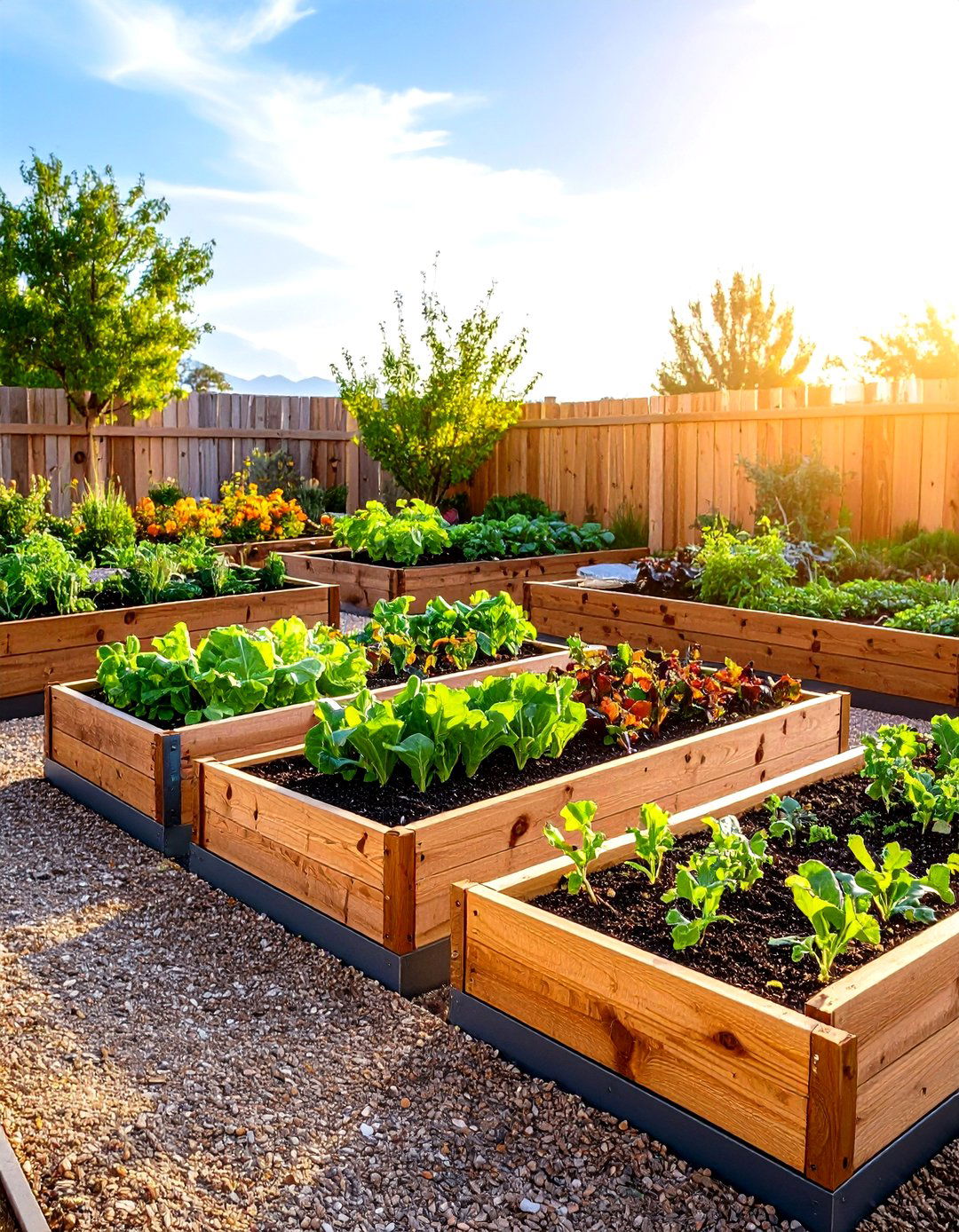
Reclaimed redwood or cedar boards become handsome planters that buffer soil temps and lift veggies above reflected ground heat. Choose boards free of chemical stamps, then line interiors with food-grade pond liner to prolong life. Orient beds east-west so leafy greens enjoy morning sun and respite later. Mulch deeply to stretch limited irrigation; overflow water can be captured in a barrel at the bed’s end for future use. The rustic wood contrasts beautifully with sleek metal edging elsewhere, adding warmth without new-lumber costs. Agriscaping
14. Pathways of Crushed Decomposed Granite Desert Landscape
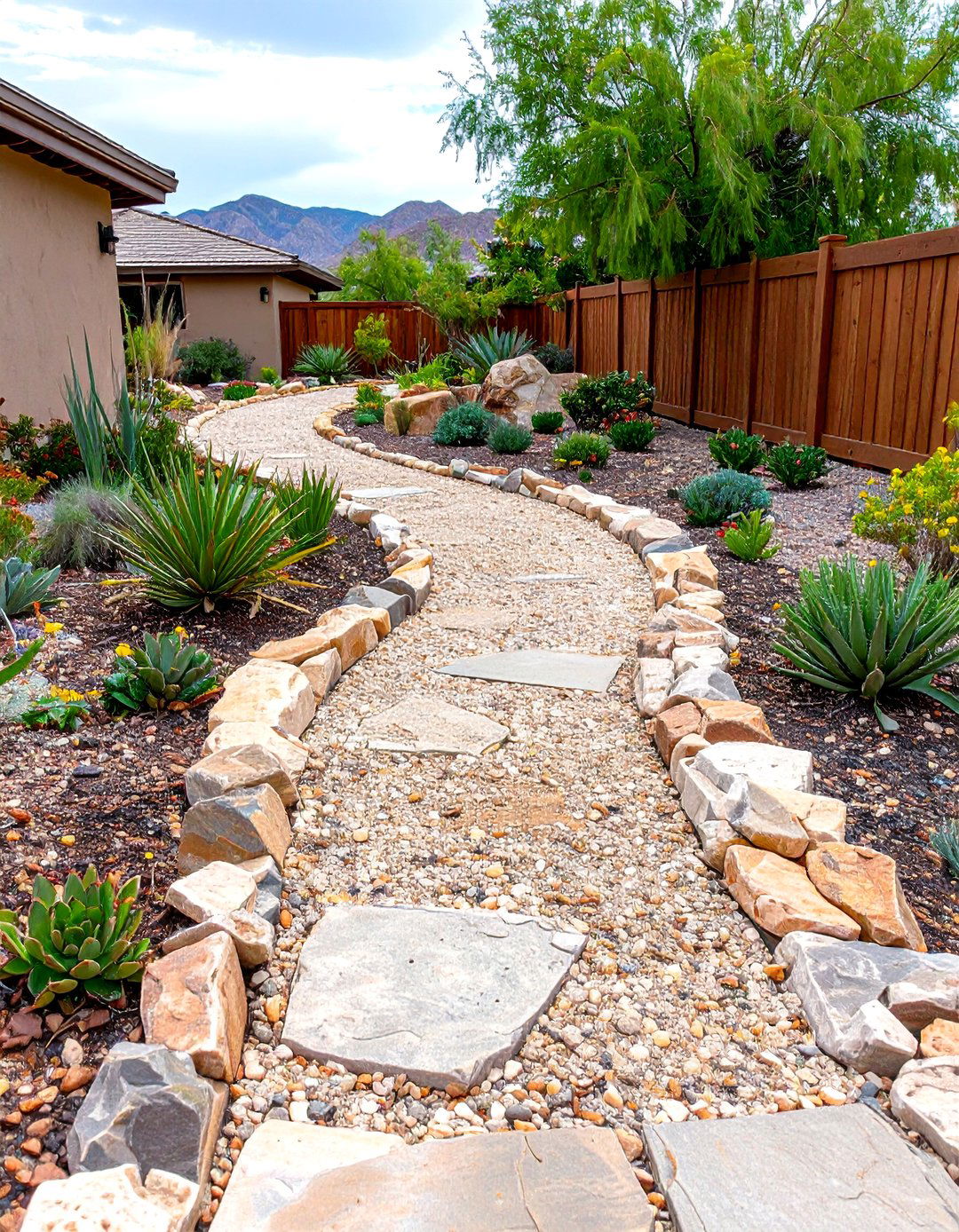
Crushed decomposed granite (DG) paths handle blistering temps while staying permeable. Excavate four inches, compact a two-inch road-base, then spread stabilized DG mixed with a binder that curbs dust and erosion. Lightly mist and tamp for a firm, wheelchair-friendly finish. The mineral tone harmonizes with desert stone and softly crunches underfoot, adding sensory charm. Annual maintenance involves sweeping fresh DG into low spots after heavy monsoon downpours. Keep a 12-inch planting buffer so invasive grasses don’t creep in. Southwest Boulder & Stone
15. Desert Landscape Rainwater-Harvesting Swale Design
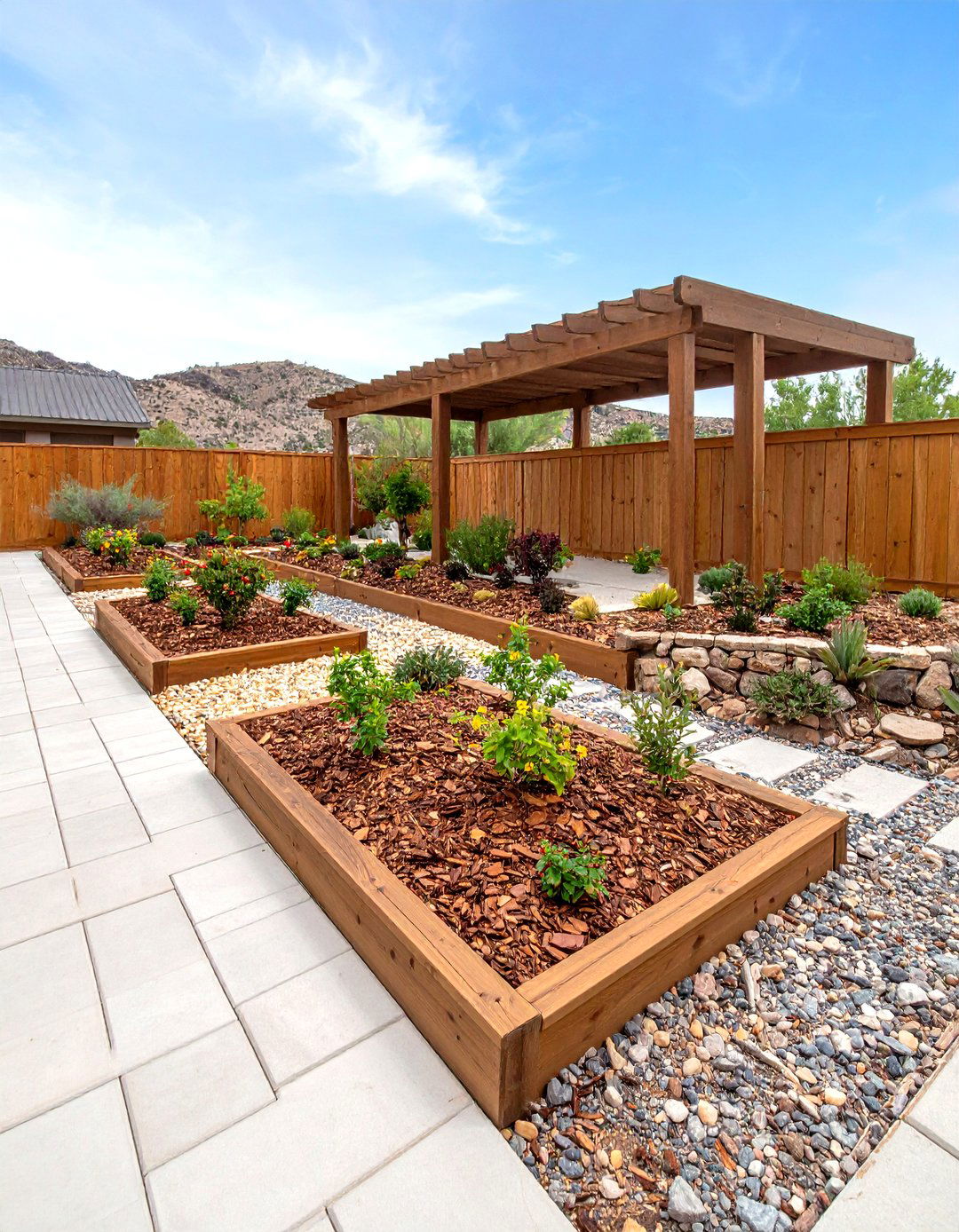
Gentle berm-and-swale earthworks slow, spread, and sink precious rainfall. Lay contours perpendicular to slope, creating level trenches 18 inches wide and 8 inches deep. Backfill with wood chips that sponge water and foster mycorrhizae. Plant deep-rooted desert hackberry and wolfberry on the berm’s downslope so roots tap stored moisture. Overflows direct excess to the next swale, forming a cascading hydrology that can halve municipal water use. Inspect before storm season to clear sediment and maintain infiltration speed. Santa Cruz Permaculture UA Cooperative Extension
16. Contemporary Metal Accent Planters Desert Landscape
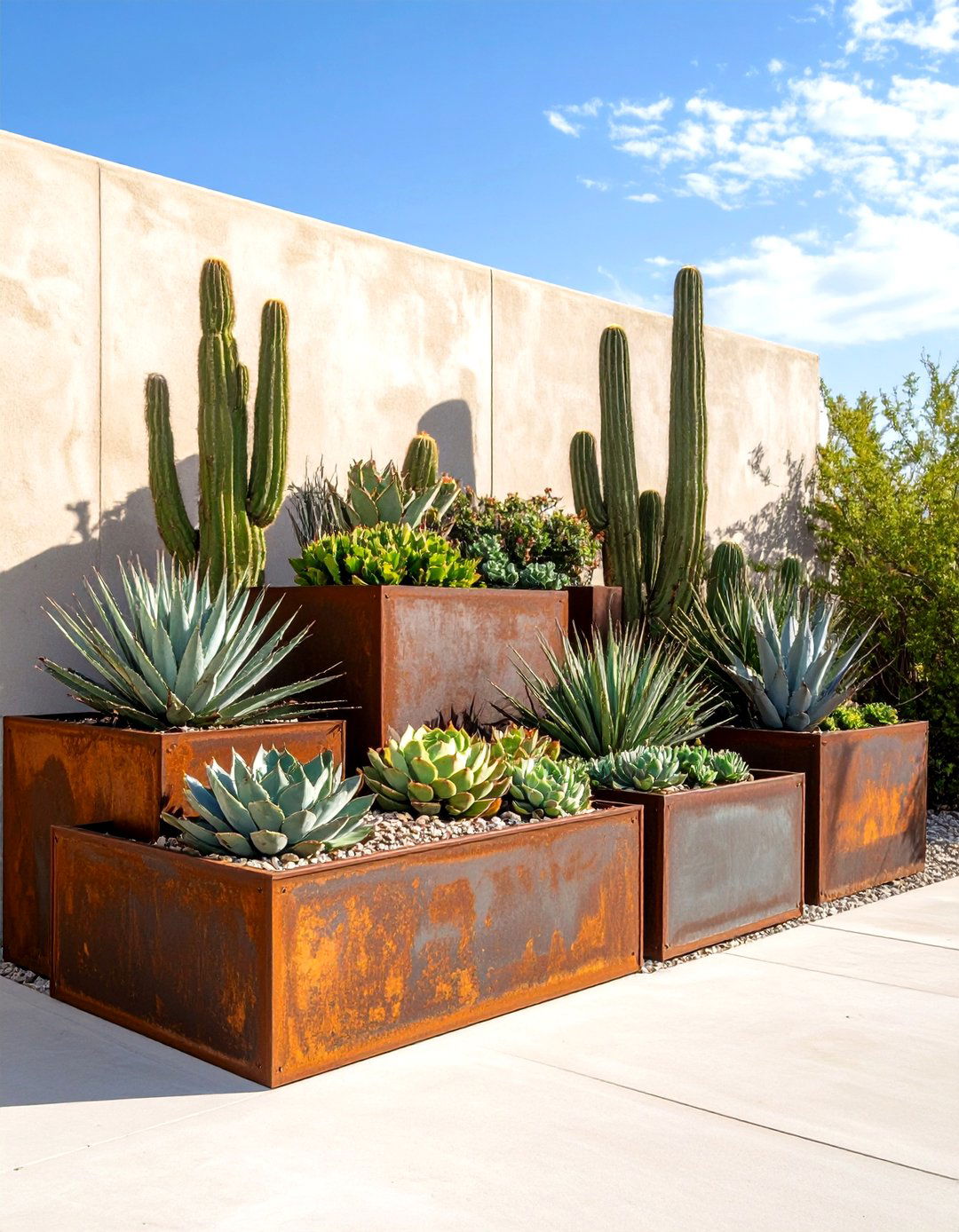
Weathering-steel (corten) boxes deliver edgy geometry while resisting rust perforation for decades. Their warm patina complements cool-toned succulents like mangave and blue chalk sticks. Set planters on 1-inch riser feet to prevent staining patios and to promote drainage. Because metal heats quickly, line interior walls with ½-inch rigid foam before soil to shield roots. Group various heights along a blank stucco wall to break monotony and bounce evening uplights. Periodically wipe surfaces with vegetable oil to deepen hue evenly. Western States Metal Roofing
17. Desert Landscape Reflective Gravel Meditation Courtyard
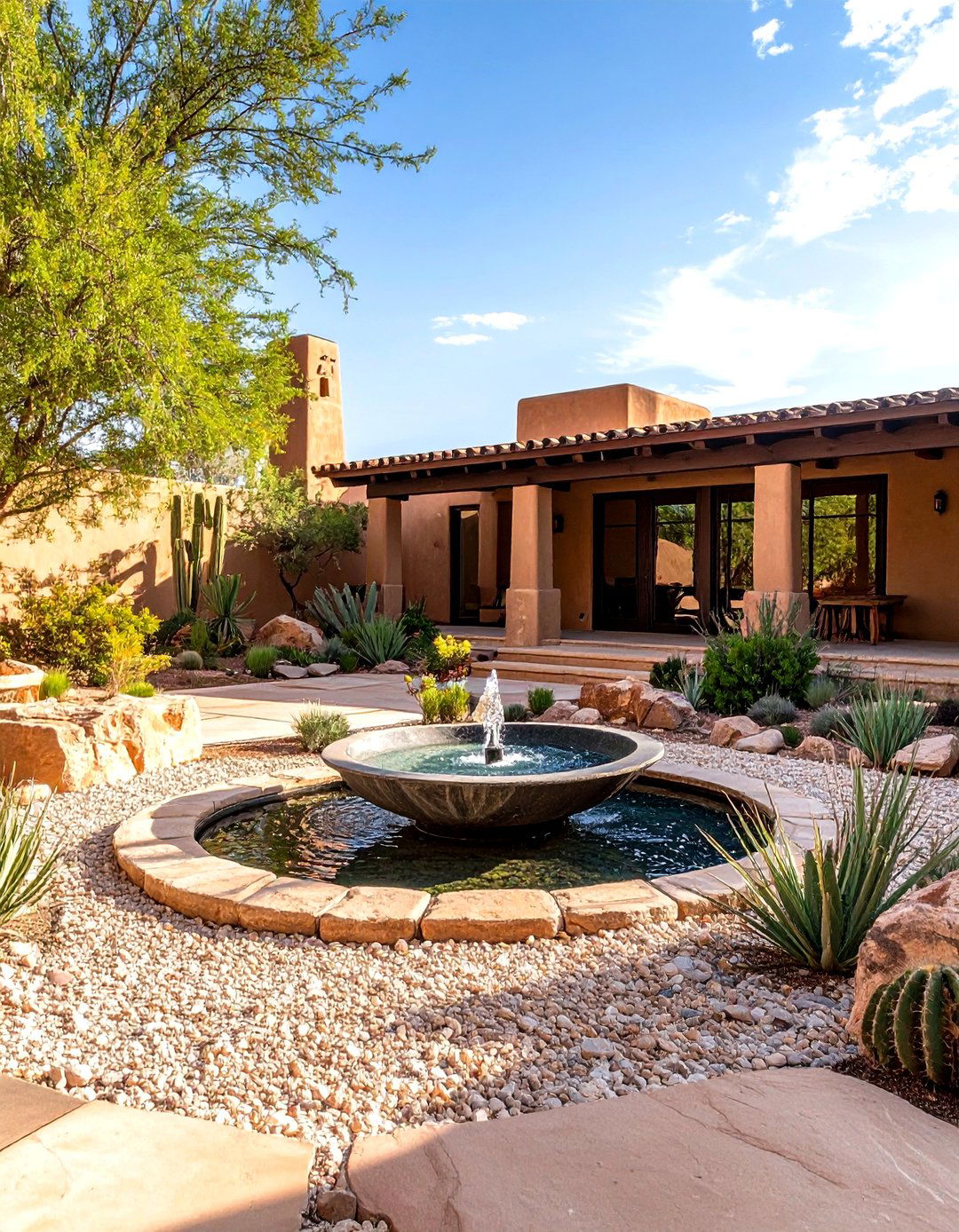
A raked-gravel courtyard offers instant calm. Choose pale quartzite chips that mirror moonlight and stay cool under bare feet. Define the space with low adobe walls that block wind and collect warmth for night lounging. Place a single basalt bowl fountain at center; its quiet trickle masks neighborhood noise and draws birds. Sweep concentric patterns daily to invite mindfulness and discourage weeds. Surround with sparsely spaced desert spoon and Moroccan mounding thyme so the void remains dominant. Discreet LED pucks along the wall wash texture without glare. Gardenista Southwest Boulder & Stone
18. Desert Landscape Vertical Shade Structure with Vines
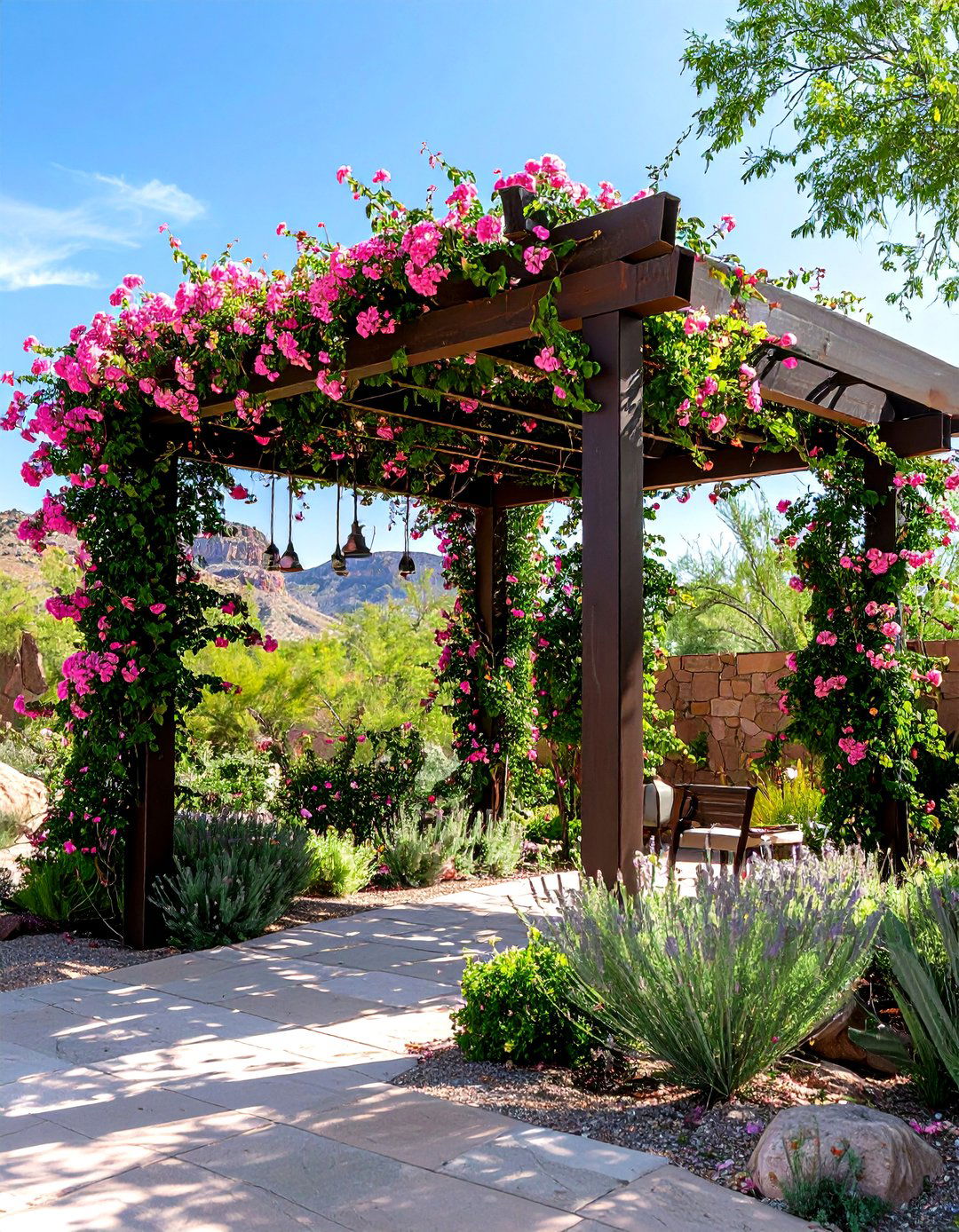
Fast-growing drought-tolerant vines—such as pink trumpet and queen’s wreath—can cloak a steel-tube pergola within two summers, dropping air temps beneath by several degrees. Install drip emitters at the vine’s base and train stems along stainless cables for even cover. Annual thinning keeps canopies airy, reducing mildew in humid monsoon weeks. In winter, deciduous vines shed leaves, letting sunlight warm adjacent windows. The structure doubles as privacy screen and living fence, perfect for tight urban lots. Growing In The Garden UA Cooperative Extension
19. Desert Landscape Native Wildflower Seasonal Burst
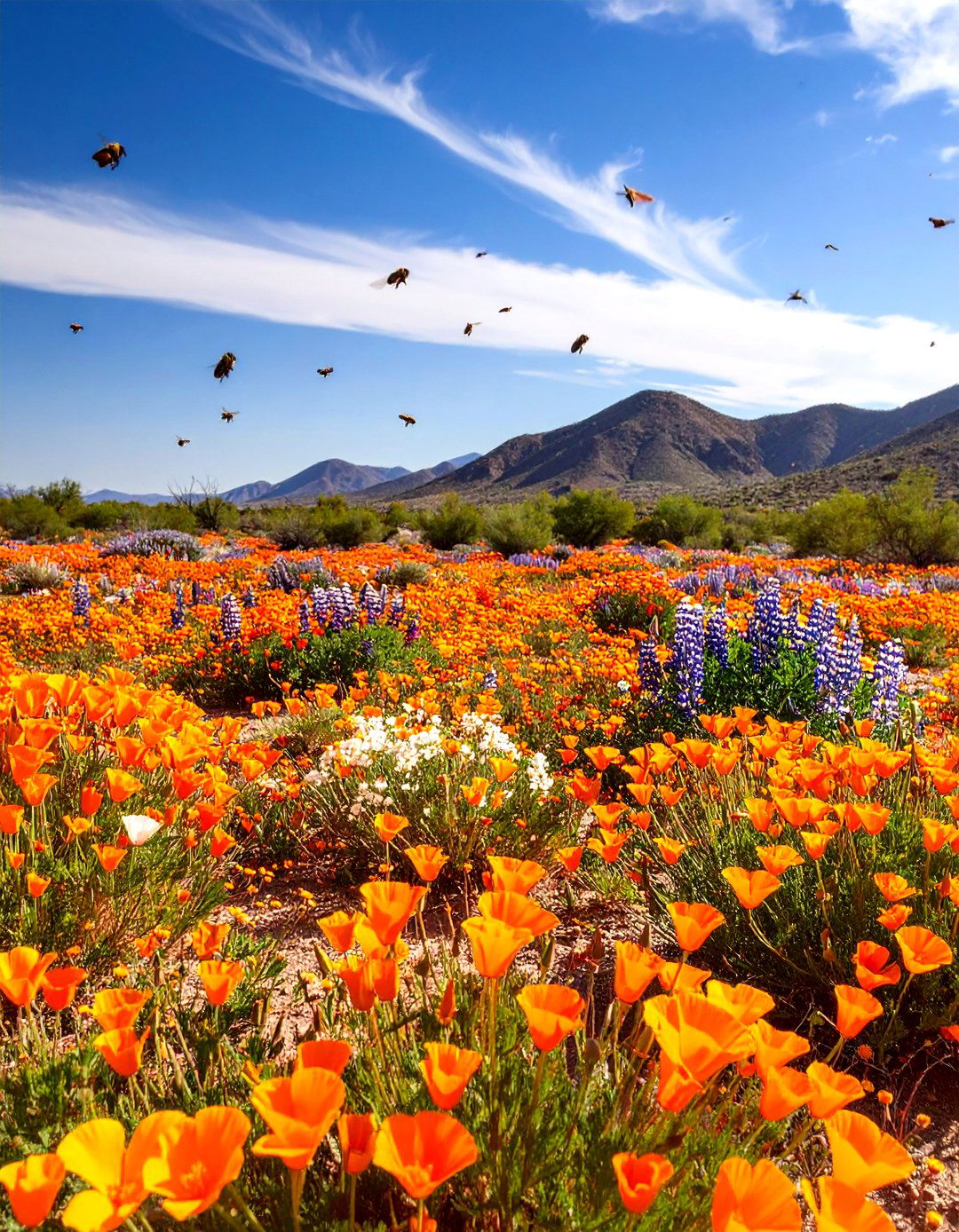
Broadcast a native wildflower seed mix of Mexican gold poppy, desert lupine, and globe mallow over lightly scarified soil in late autumn. Winter rains trigger germination, and by March a carpet of color hums with bees. After seed set, trim spent stalks to six inches so light reaches emerging perennials beneath. Avoid fertilizer, which encourages weak, flopping growth; these natives prefer lean ground. Collect a small portion of seed heads to reseed bare spots next fall, creating a self-sustaining, ever-shifting tapestry year after year. Fine Gardening Gardenia
20. Desert Landscape Low-Voltage Lighting to Highlight Texture
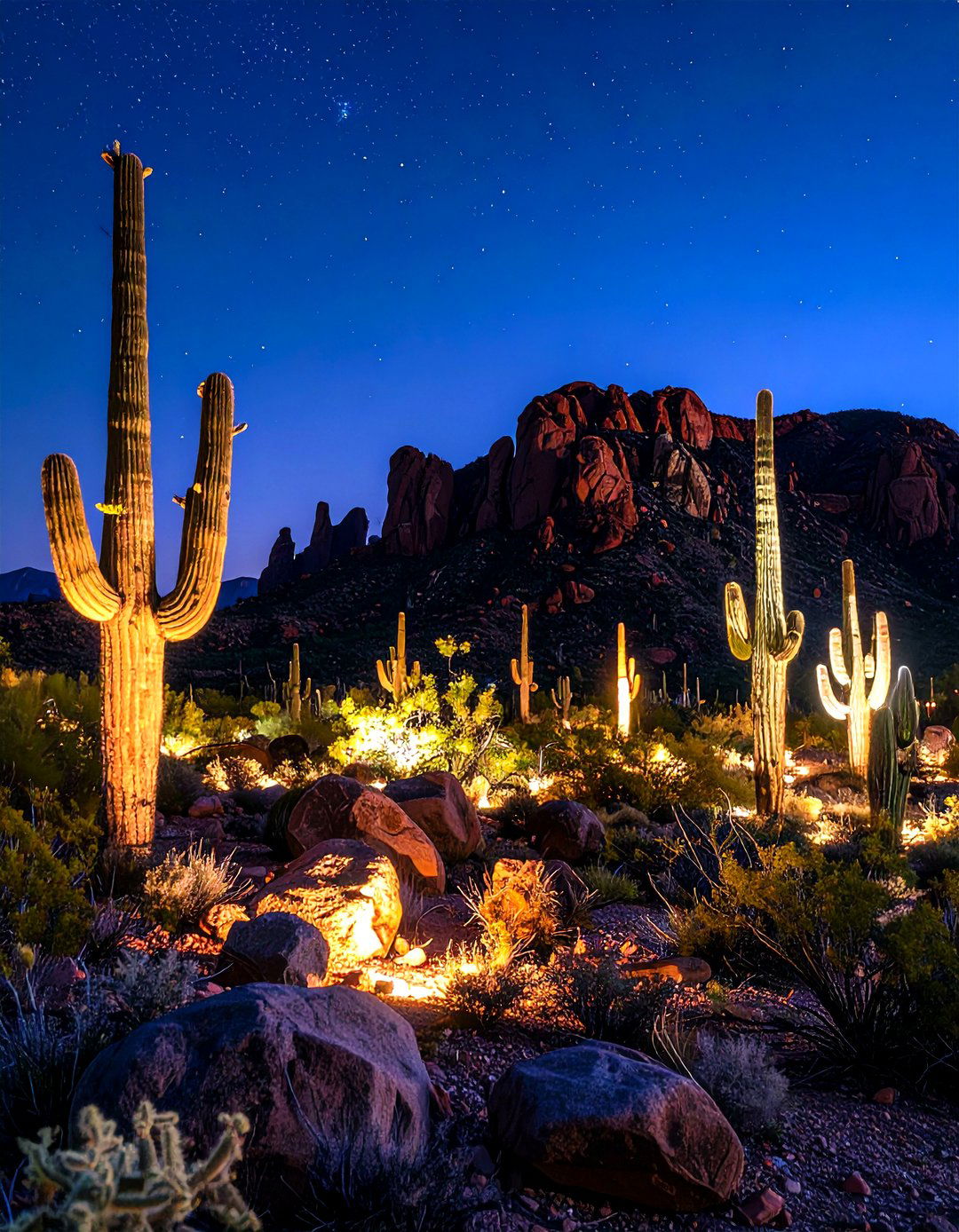
Strategic low-voltage LED fixtures animate night scenes without spiking power bills. Position 3000 K spotlights at the base of saguaros or boulder faces to reveal rib shadows and mineral sparkle. Down-lights mounted high in ironwood trees cast gentle “moonlight,” guiding paths safely. Keep wires six inches deep and fixtures three feet from mulch to prevent overheating. Replace halogen remnants with LEDs that sip a tenth of the energy and last 25,000 hours. An astronomer-friendly timer curbs light pollution after midnight while still deterring nighttime pests. Homebuilding Let There Be Light
Conclusion:
Harnessing the desert’s raw elements—sun, stone, sparse rain, and resilient flora—opens creative freedoms rather than limitations. By pairing climate-adapted plants with permeable hardscape, smart irrigation, and thoughtful lighting, each of these ideas turns water scarcity into design opportunity, yielding inviting outdoor rooms that celebrate texture, color, and ecological harmony year-round.


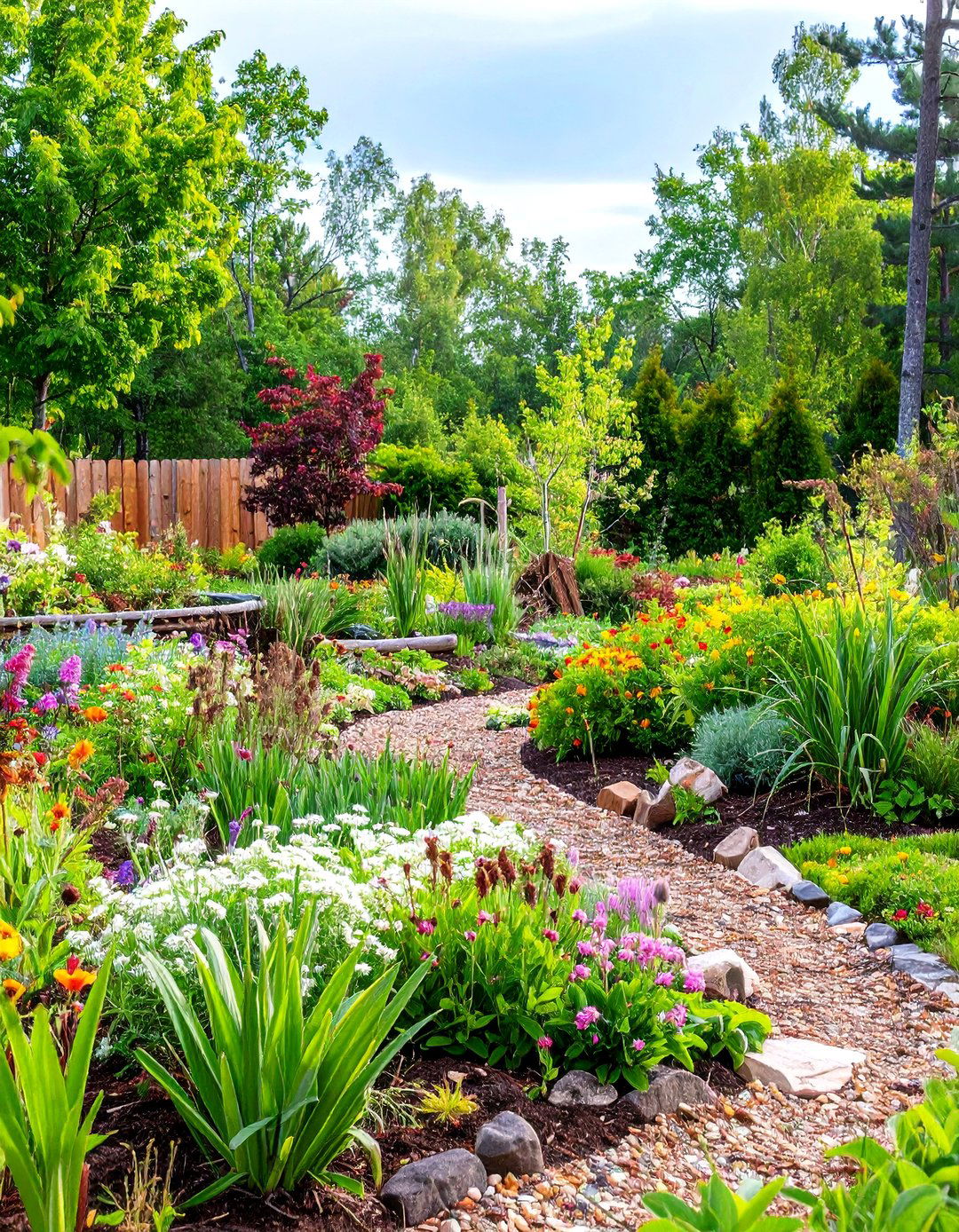
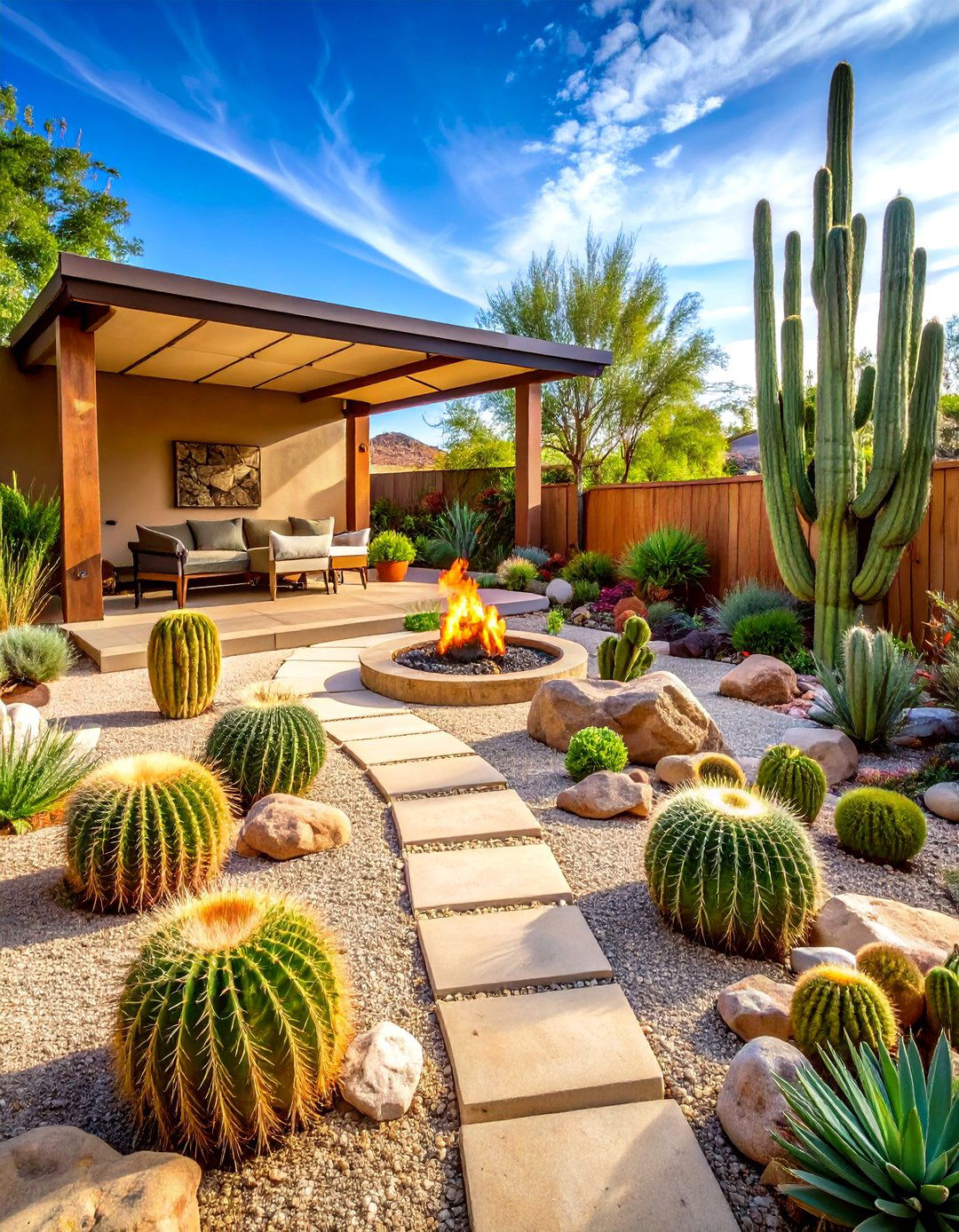
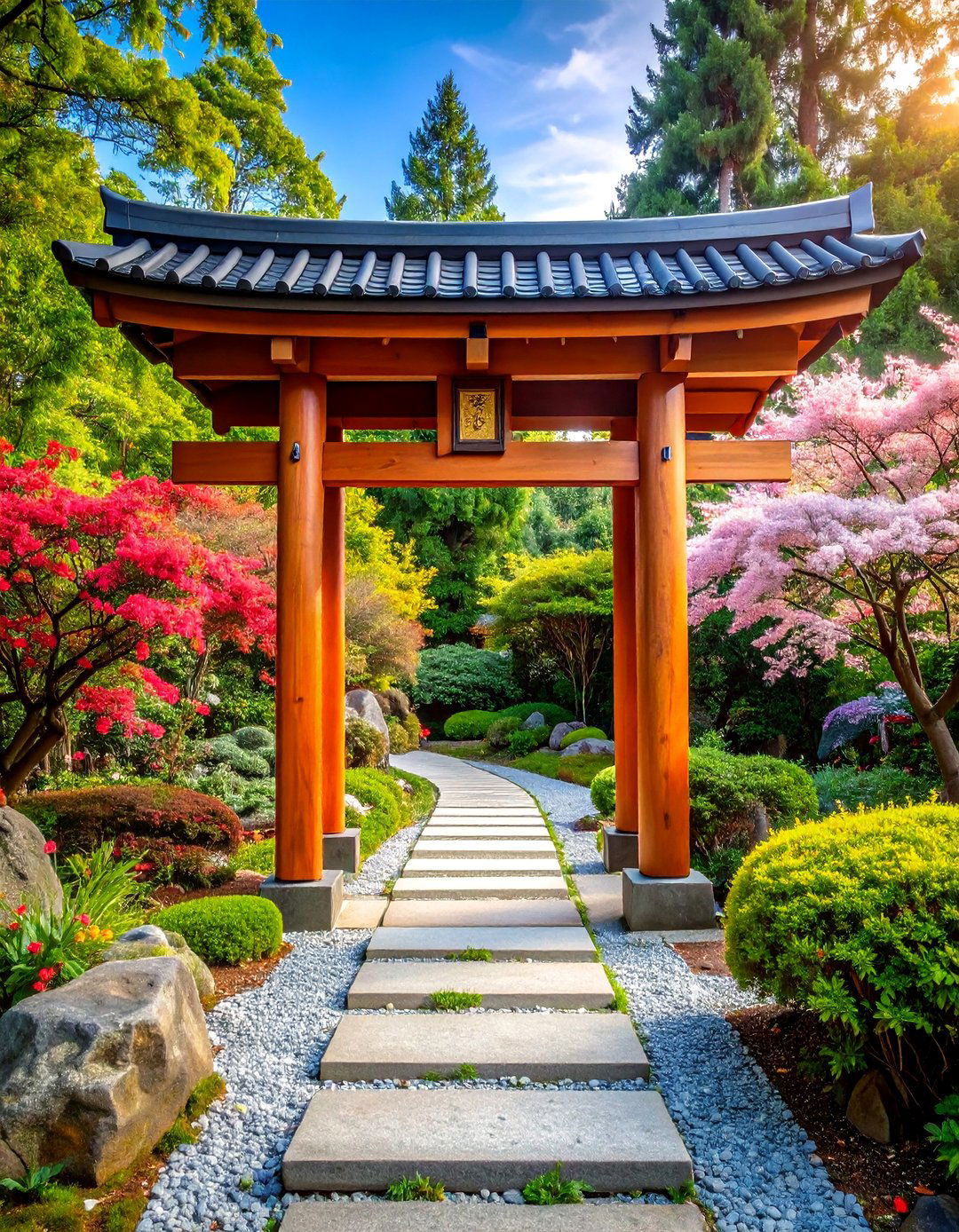
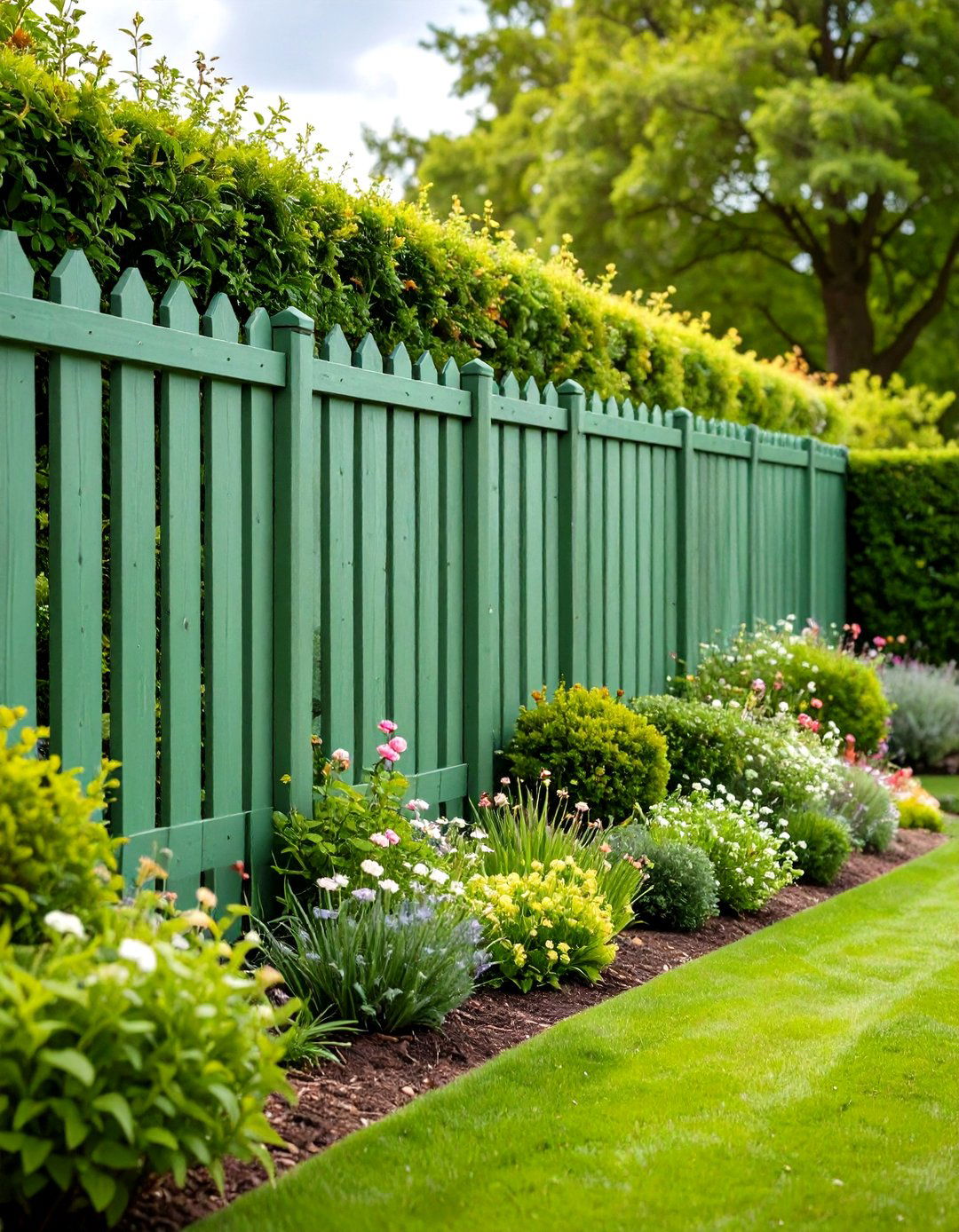
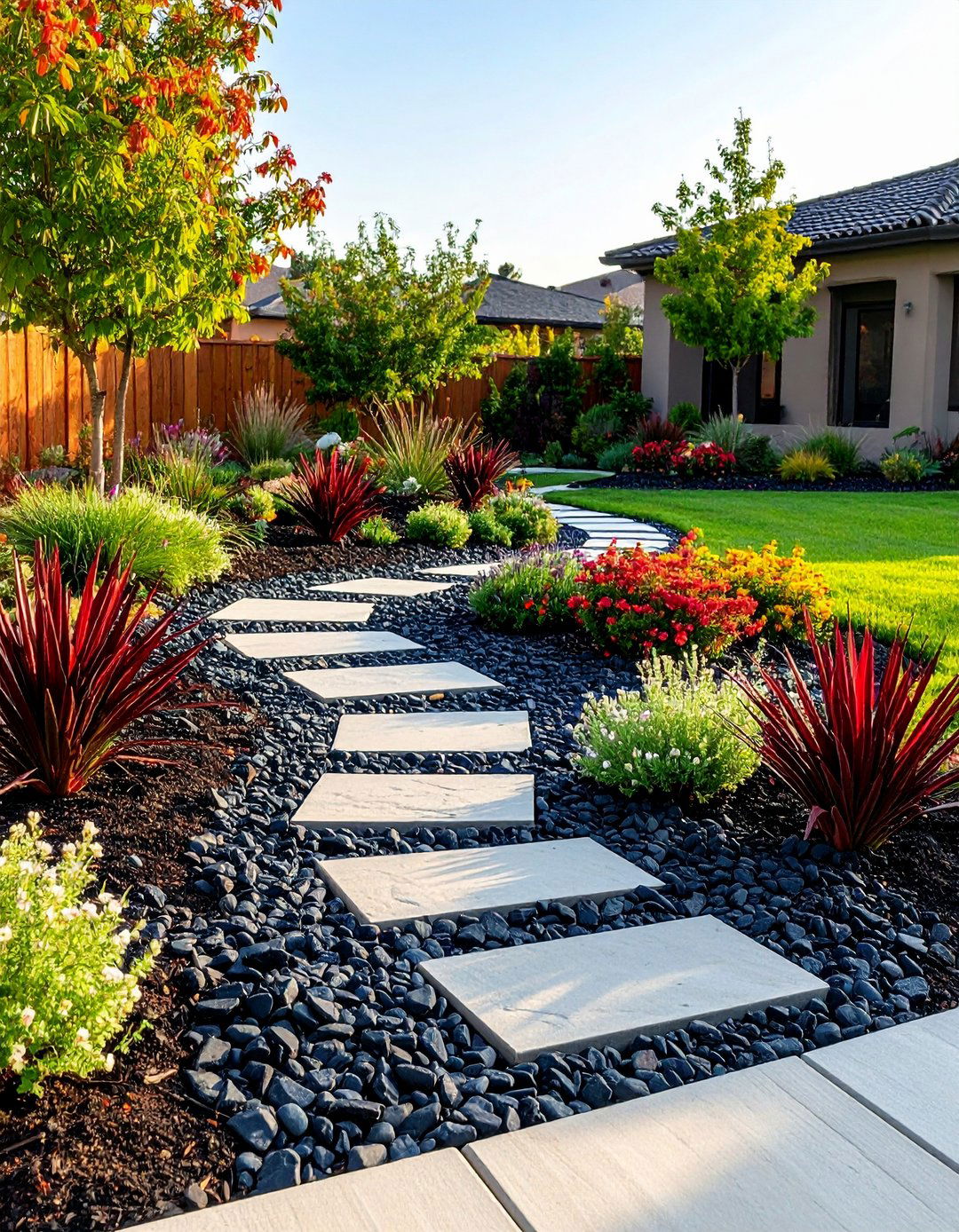

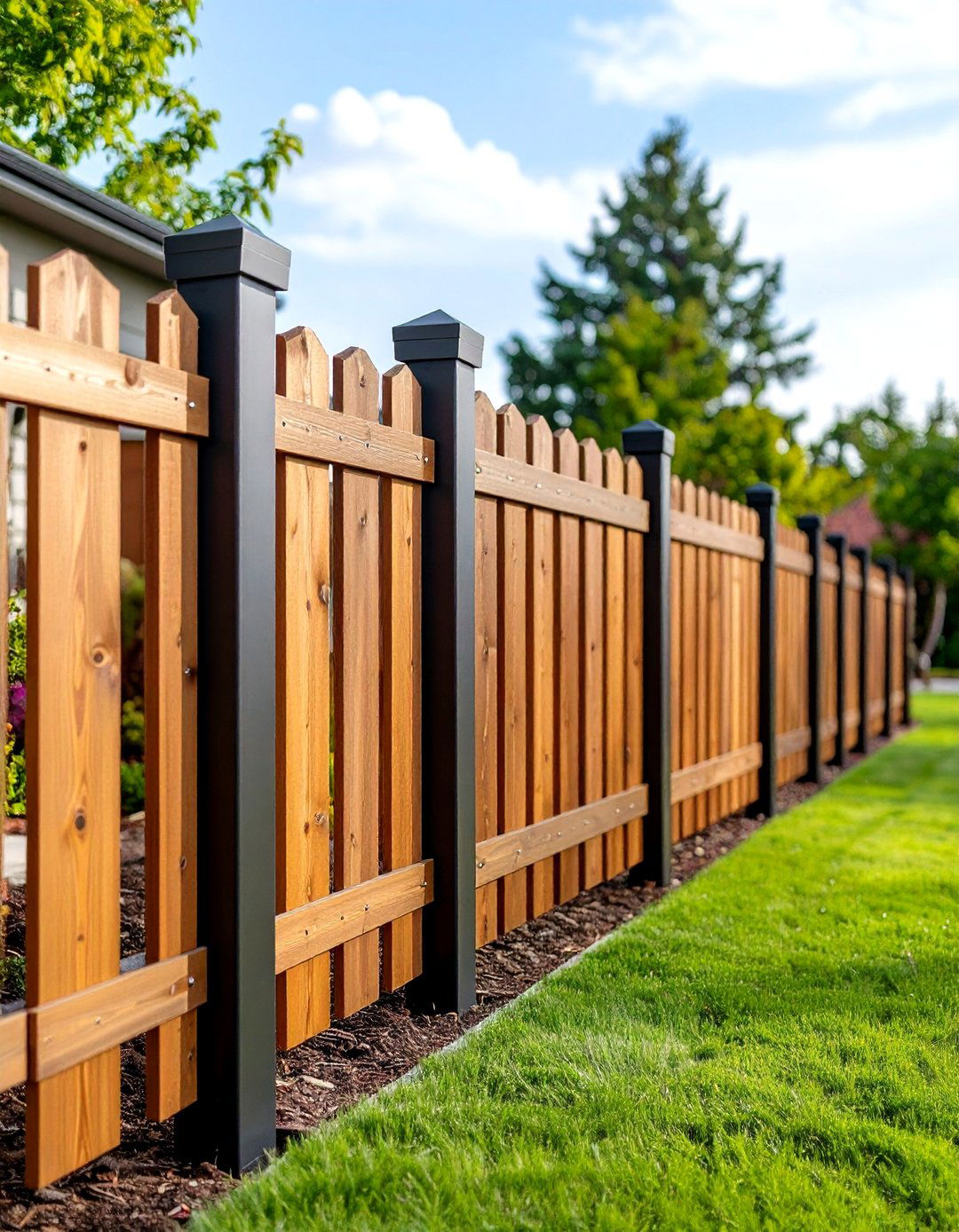
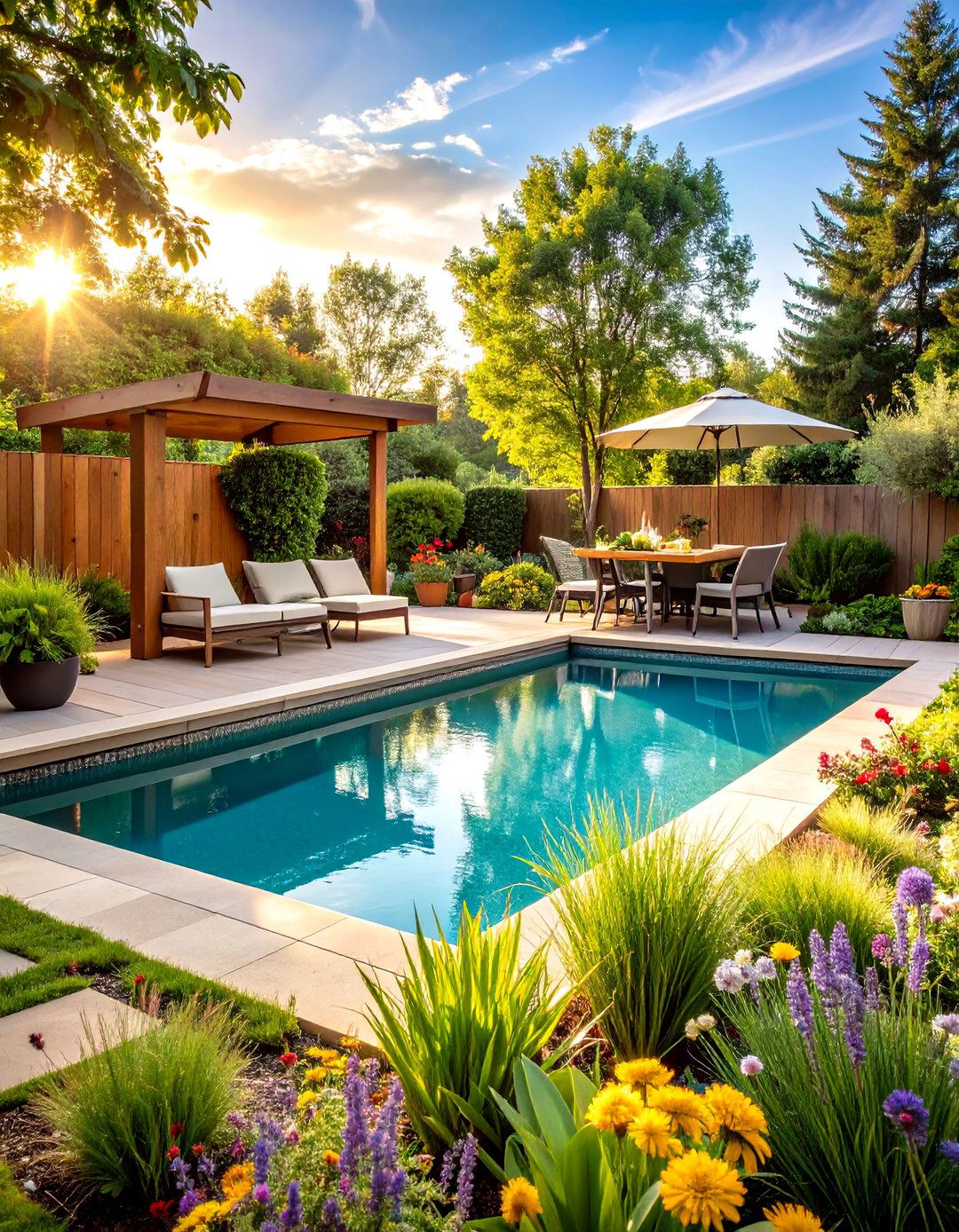

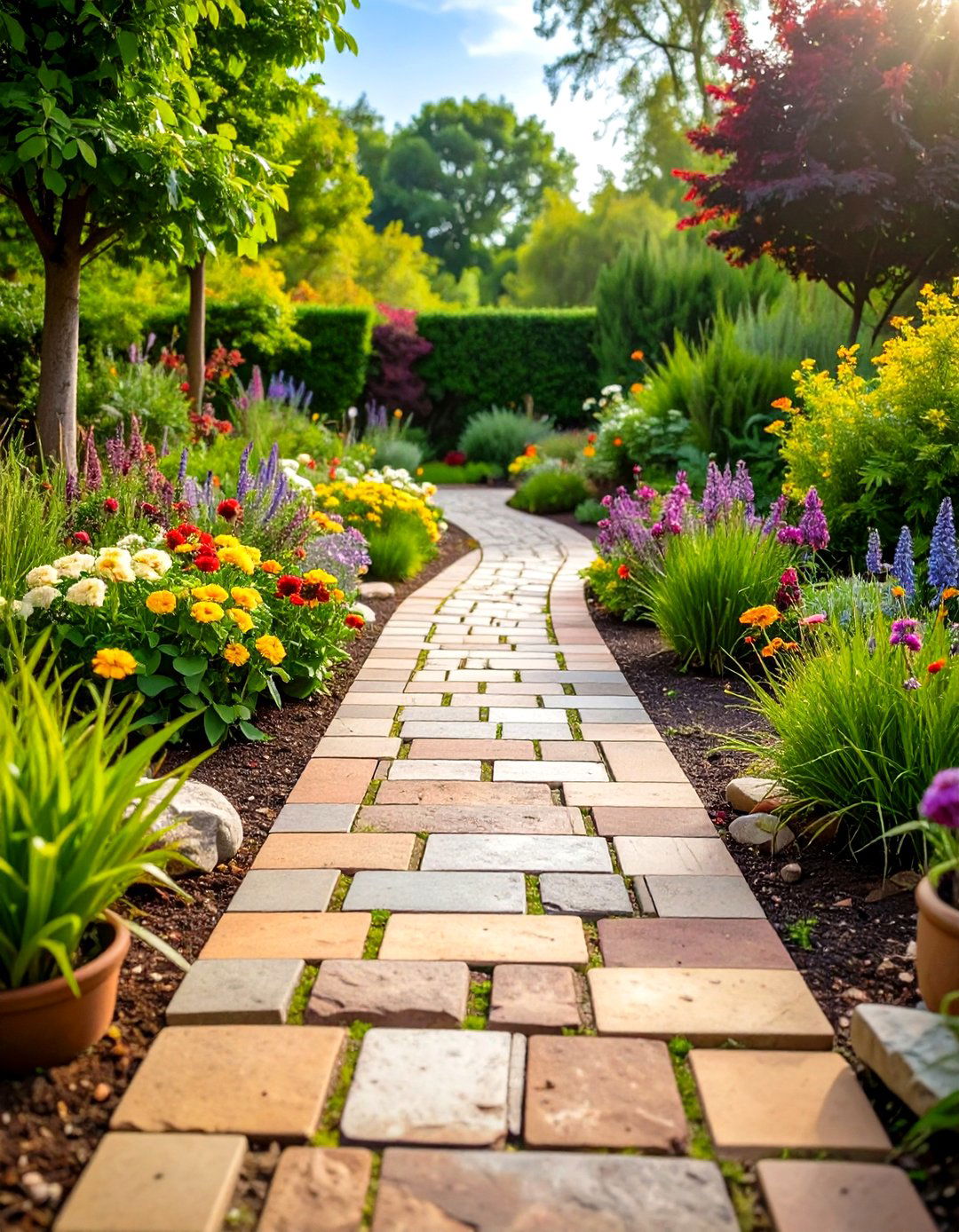
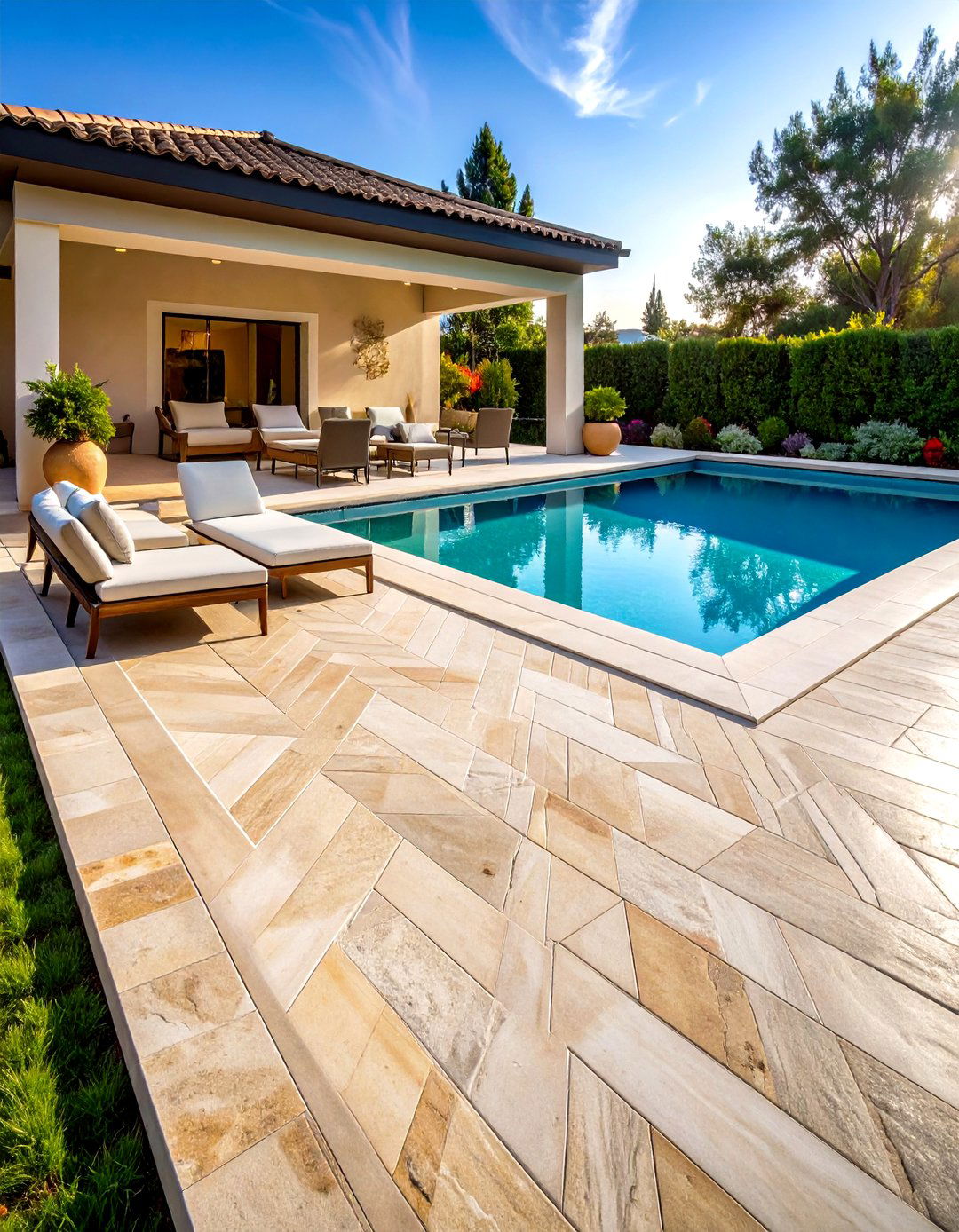
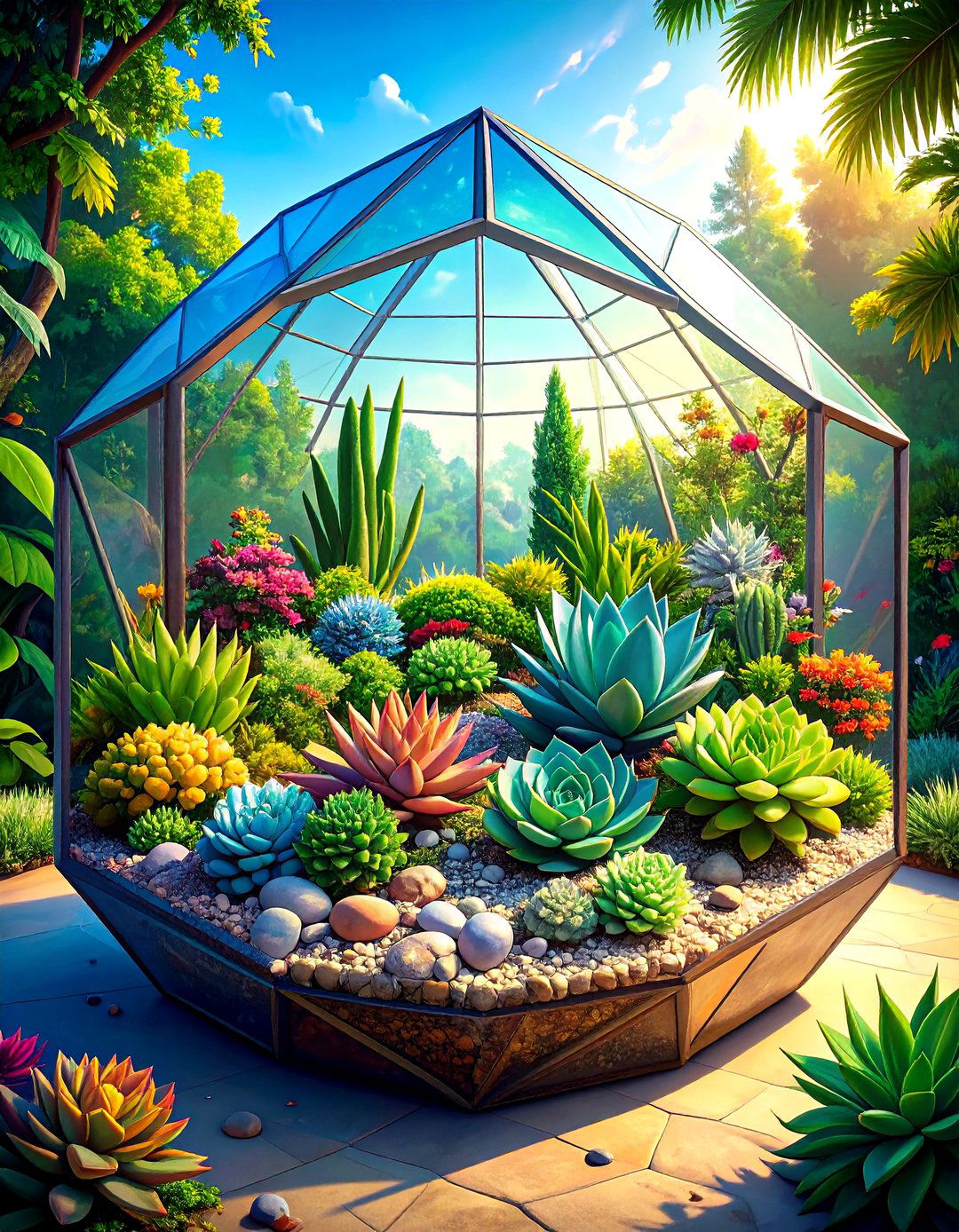
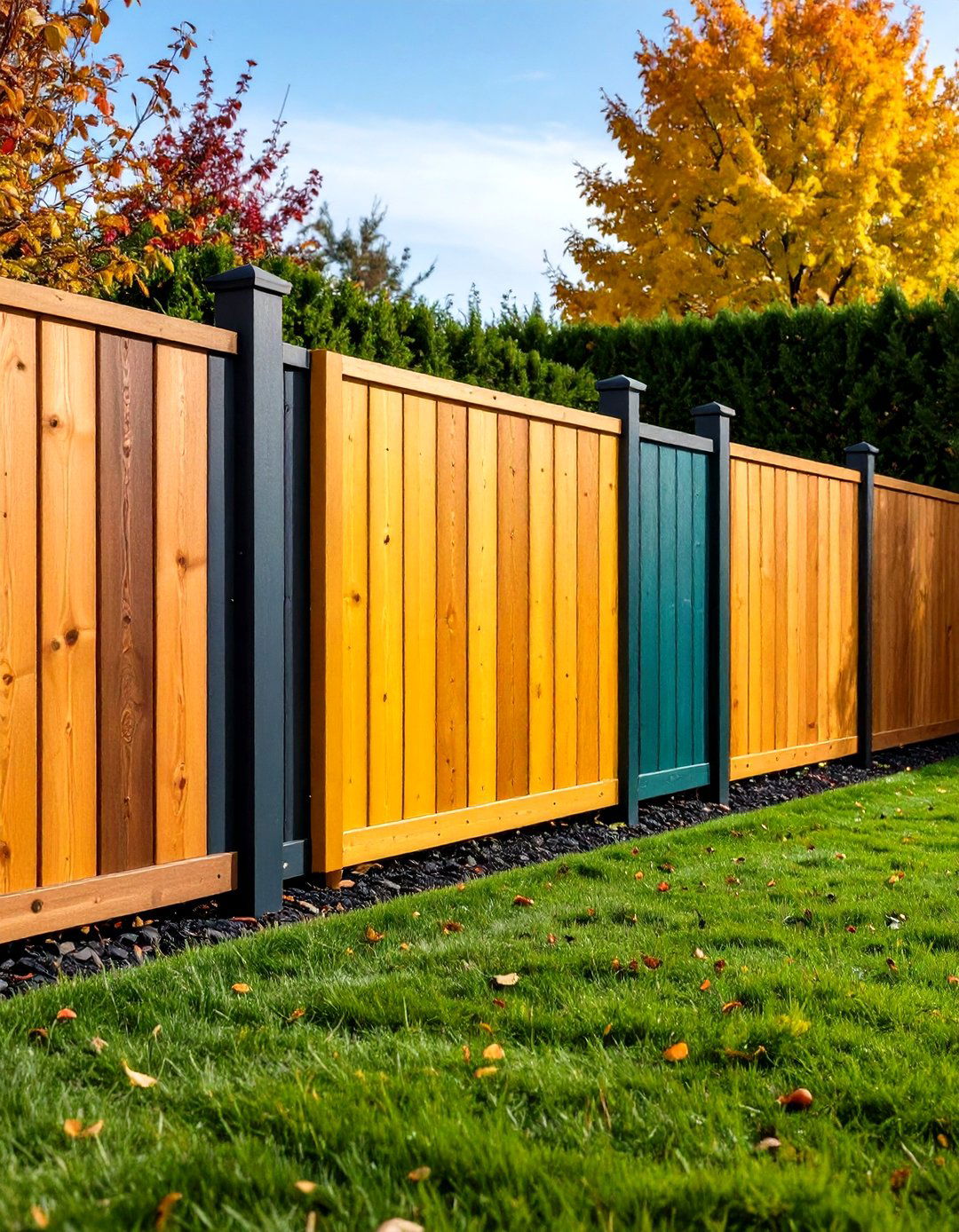

Leave a Reply